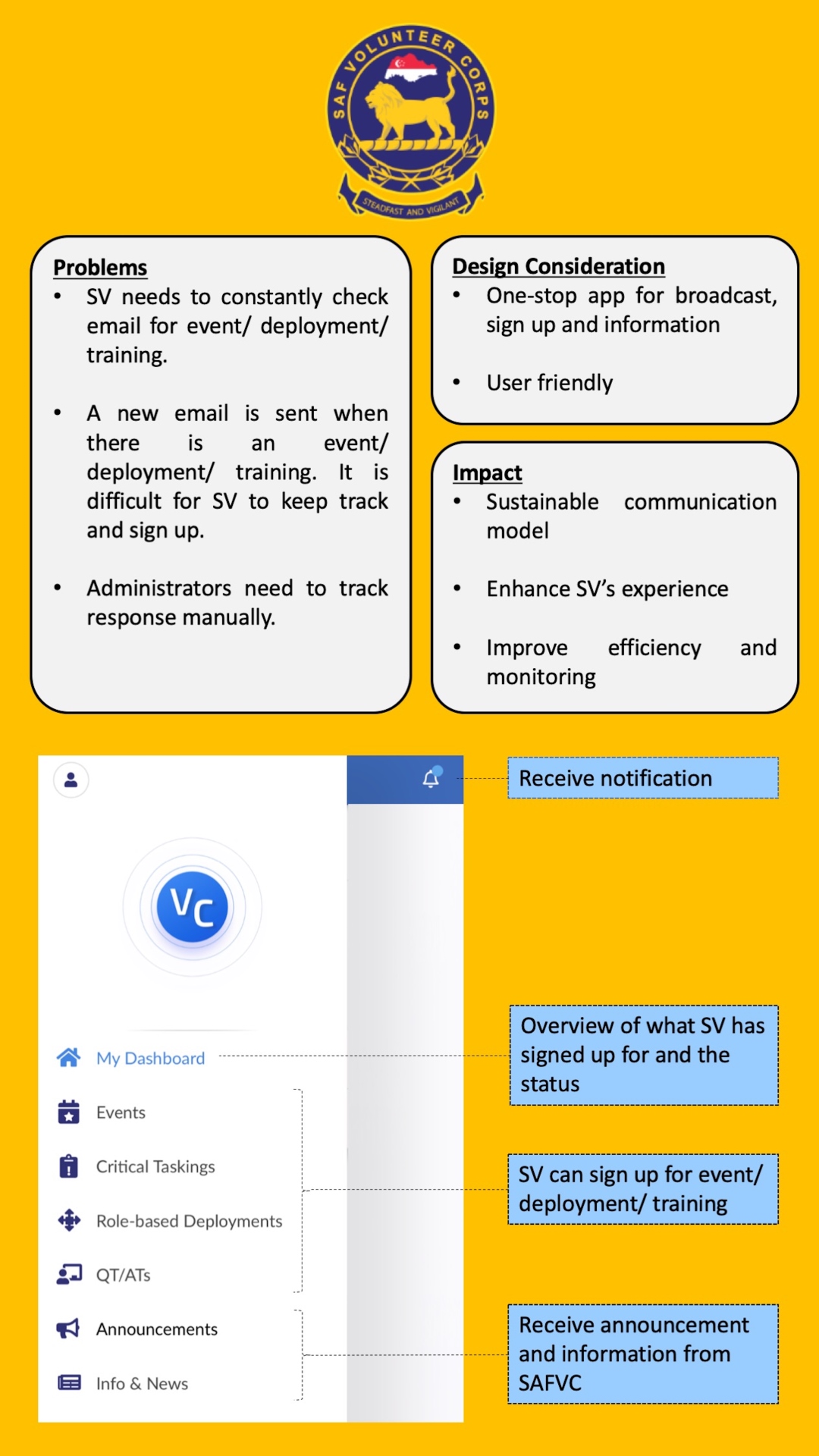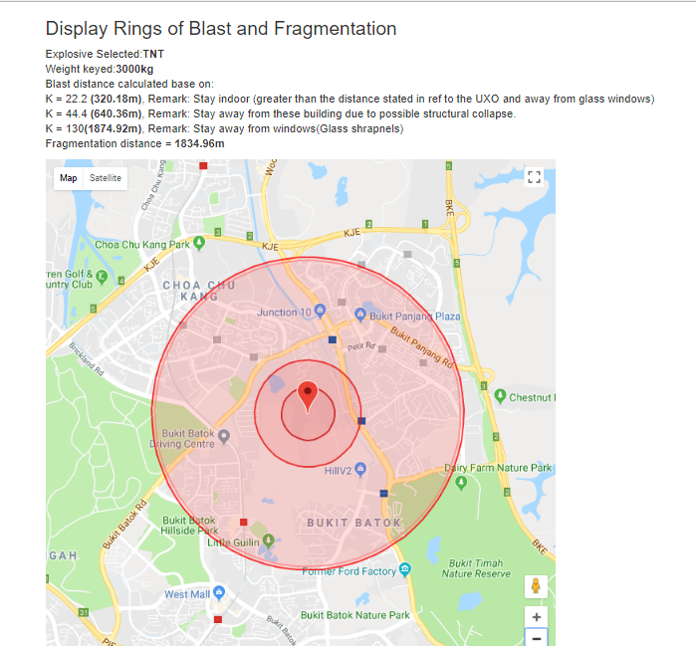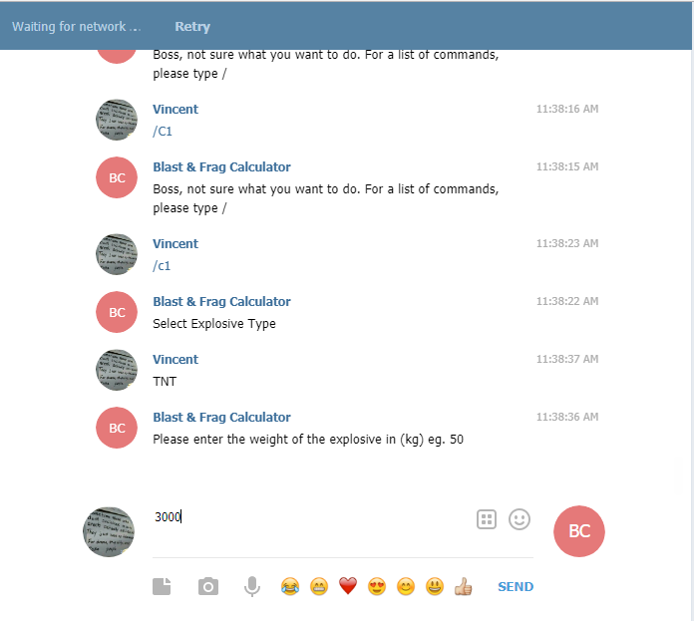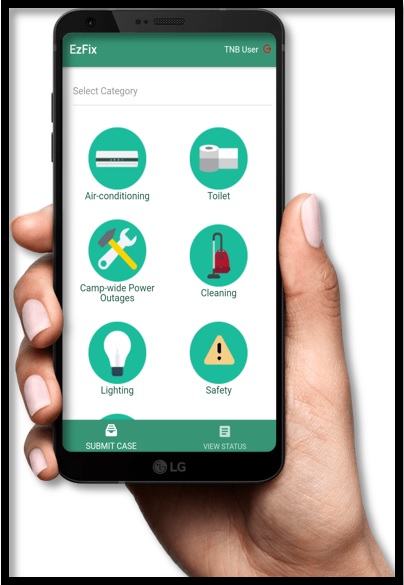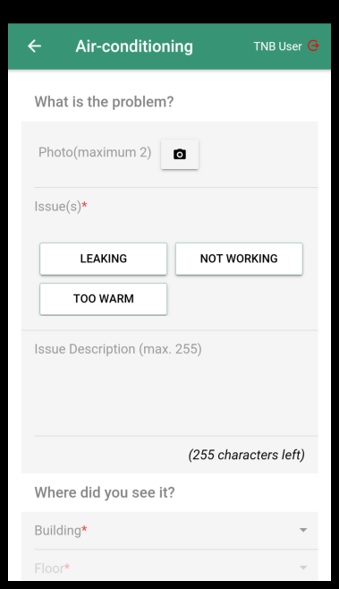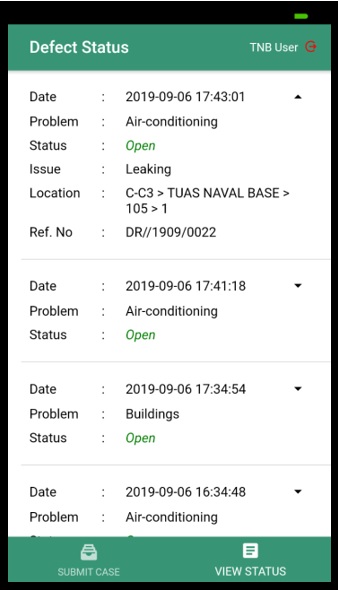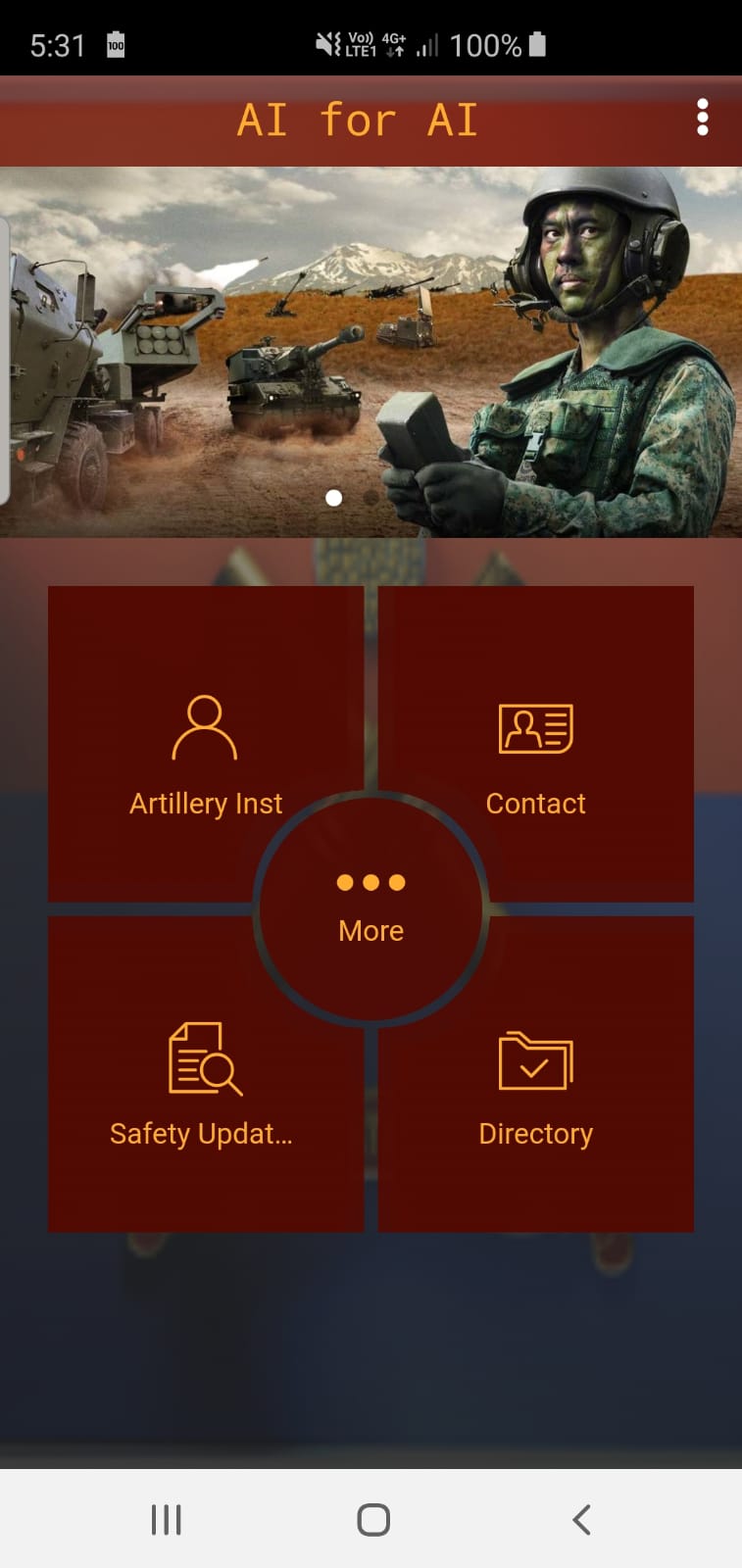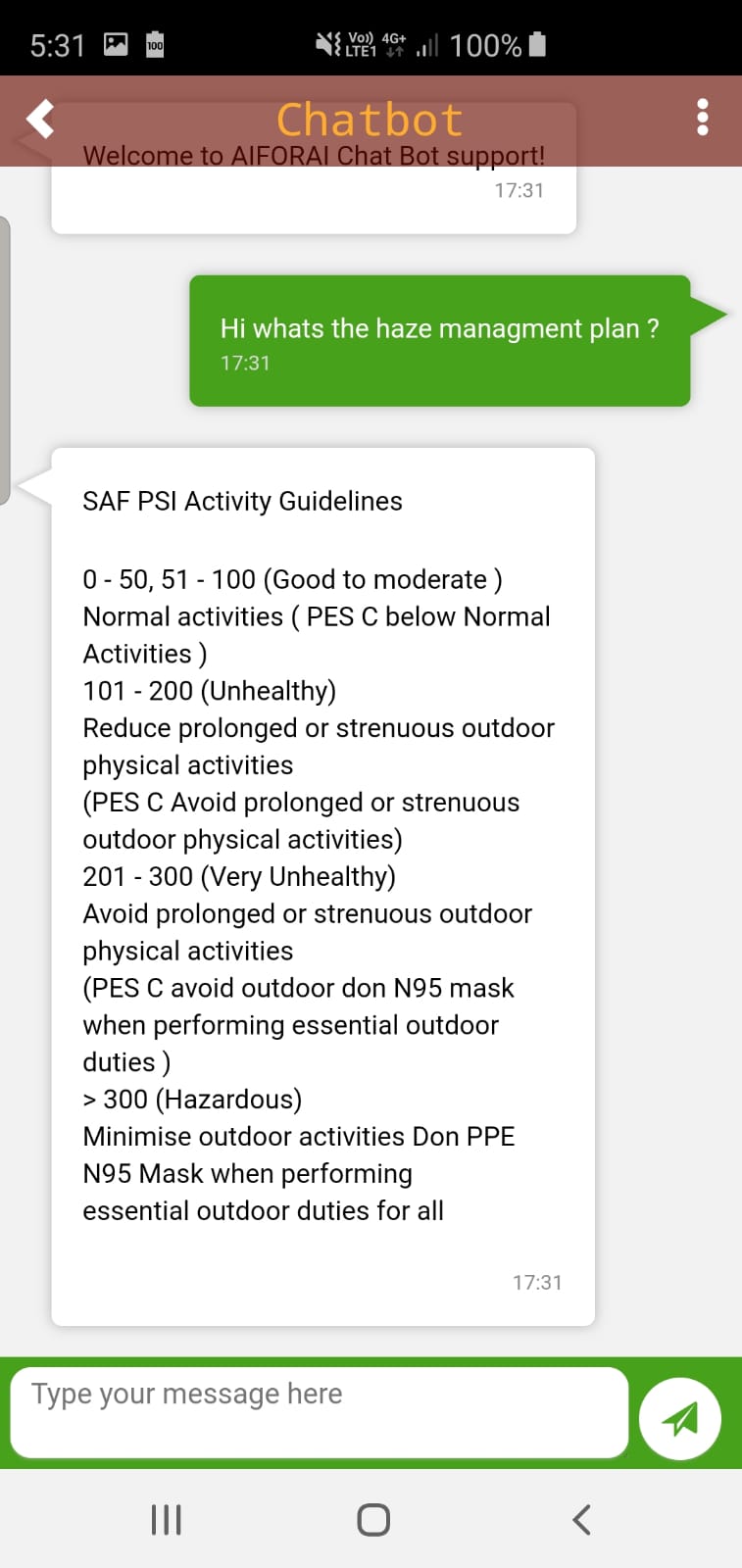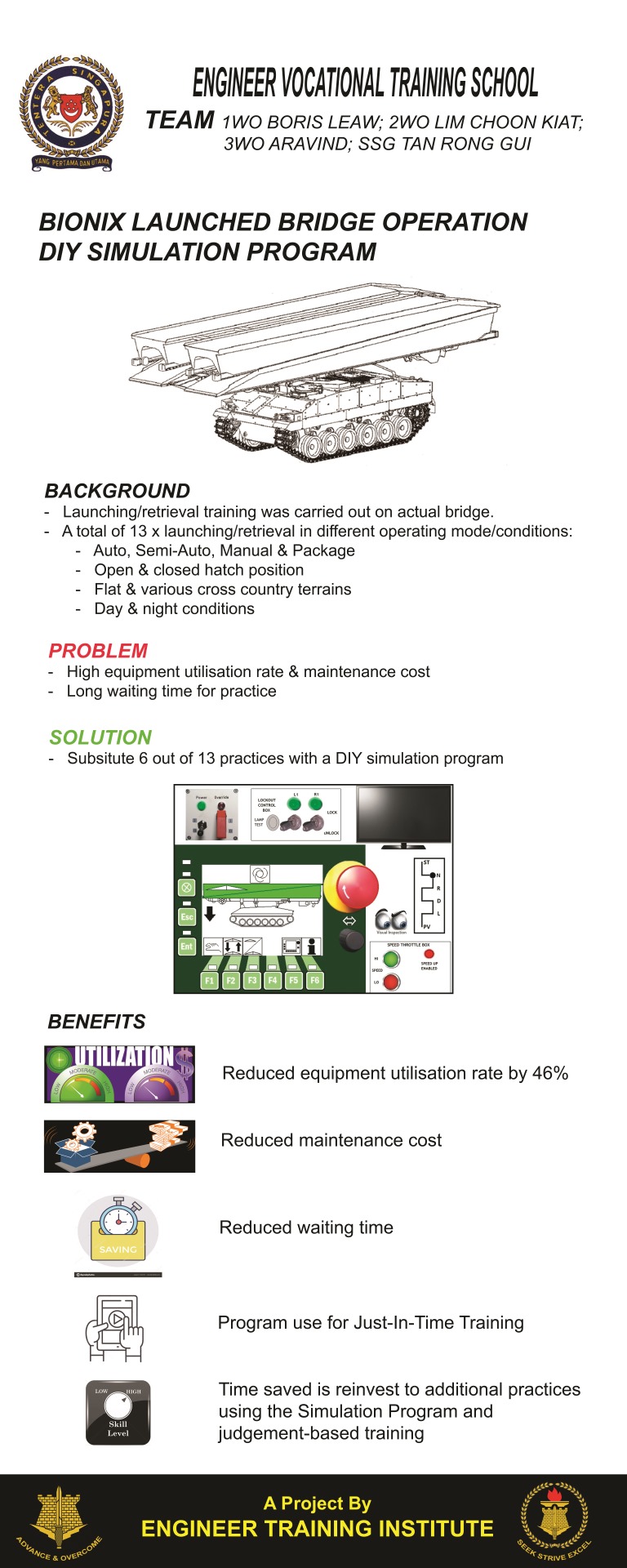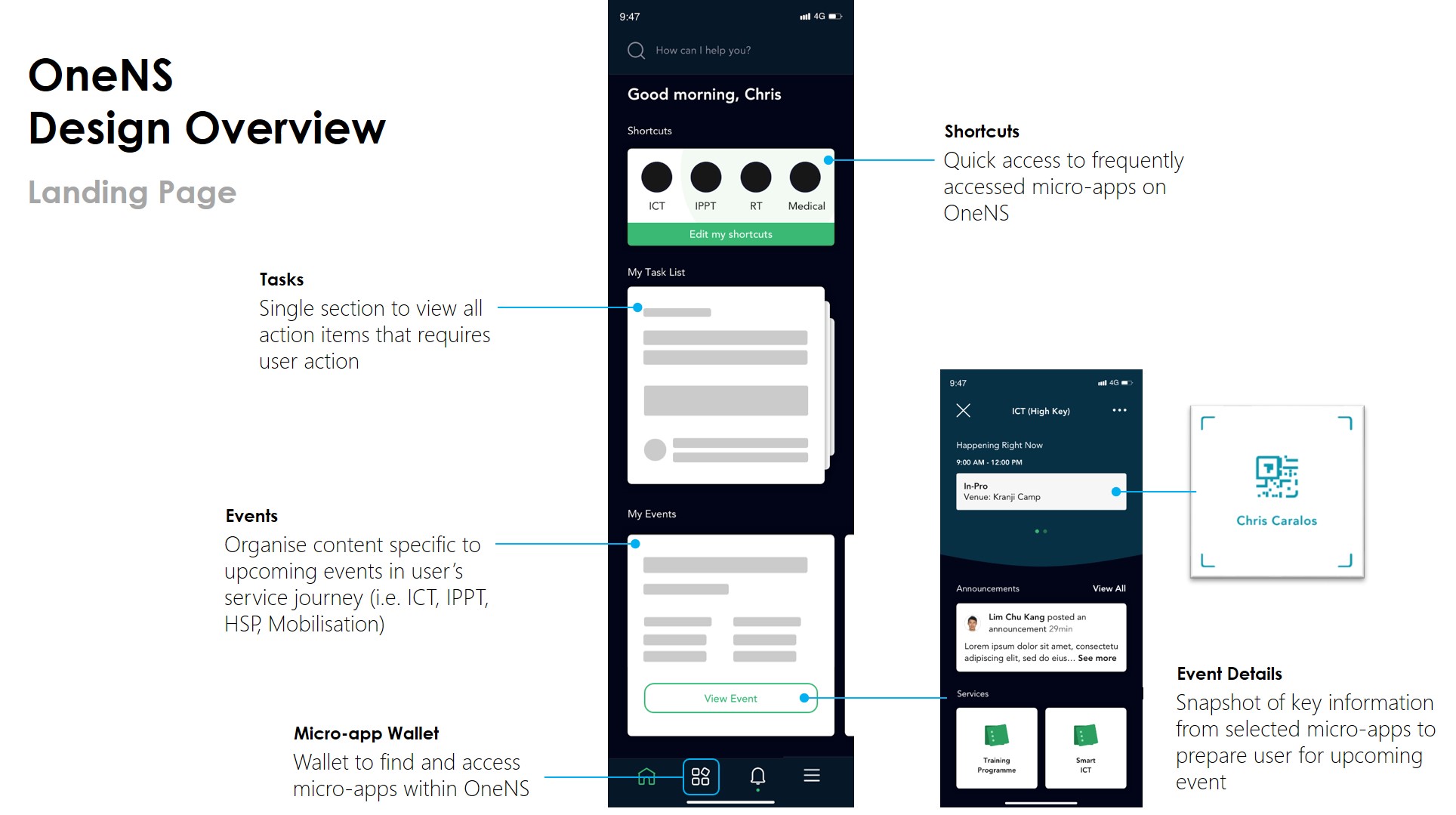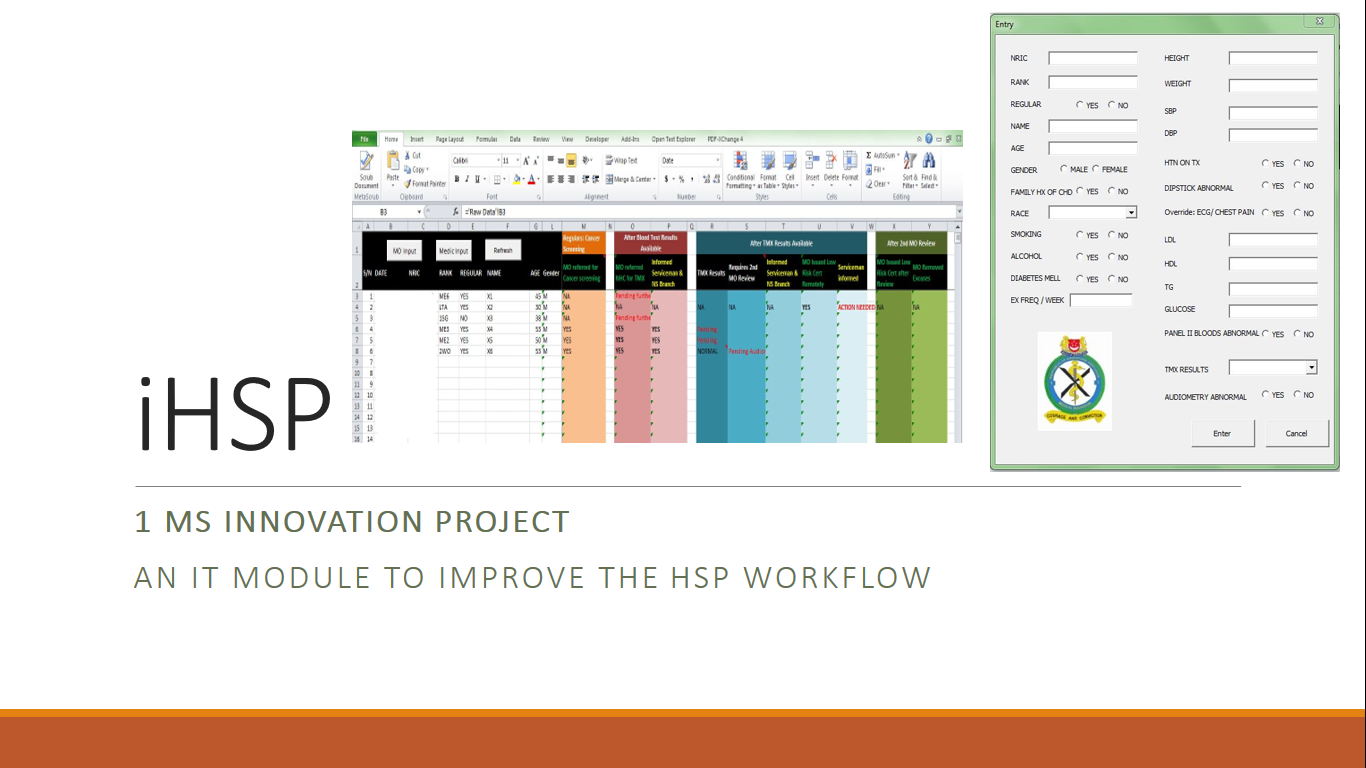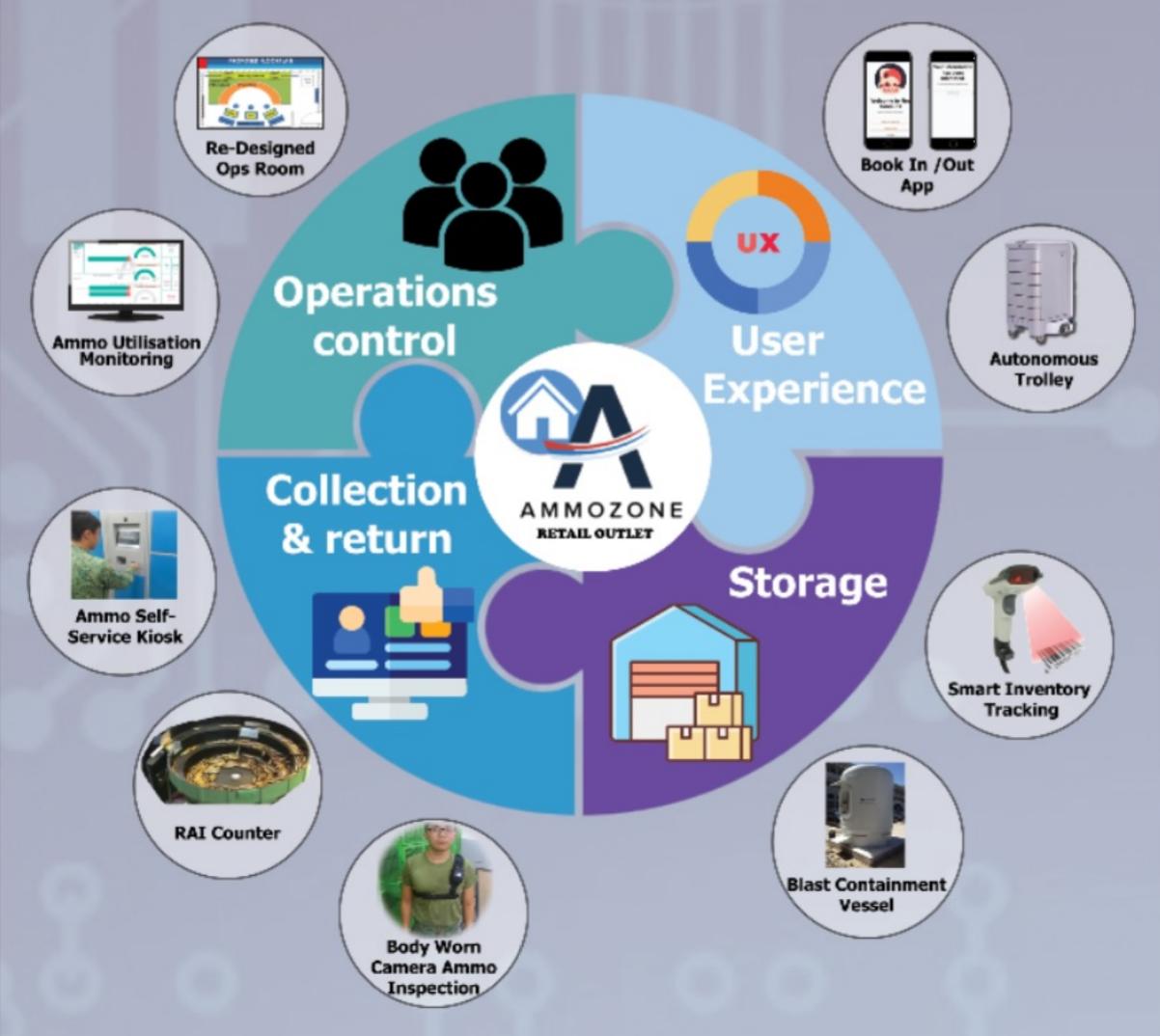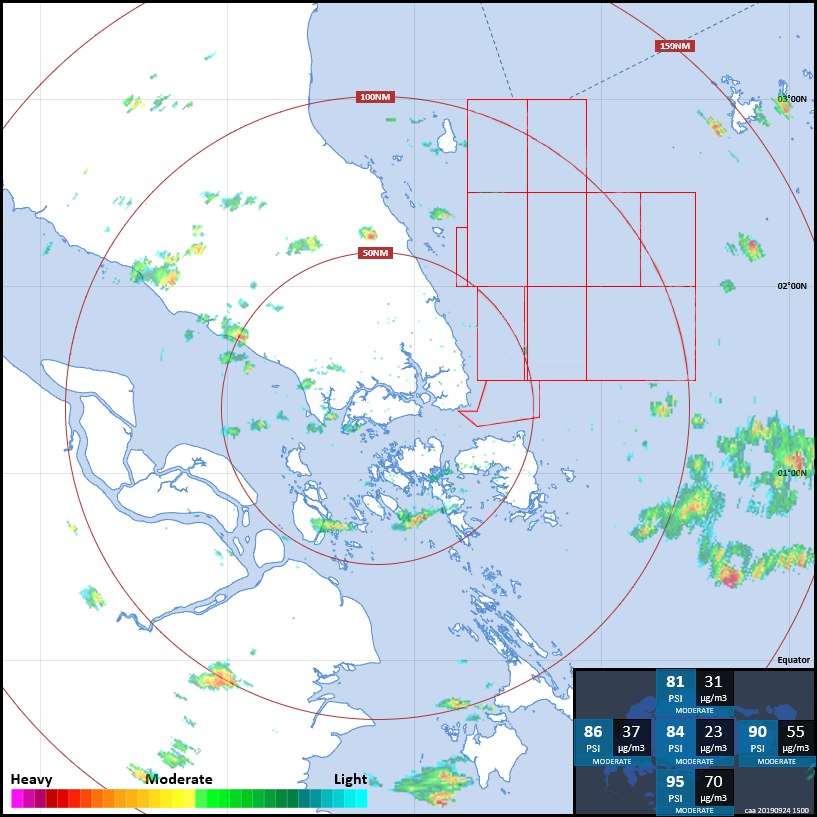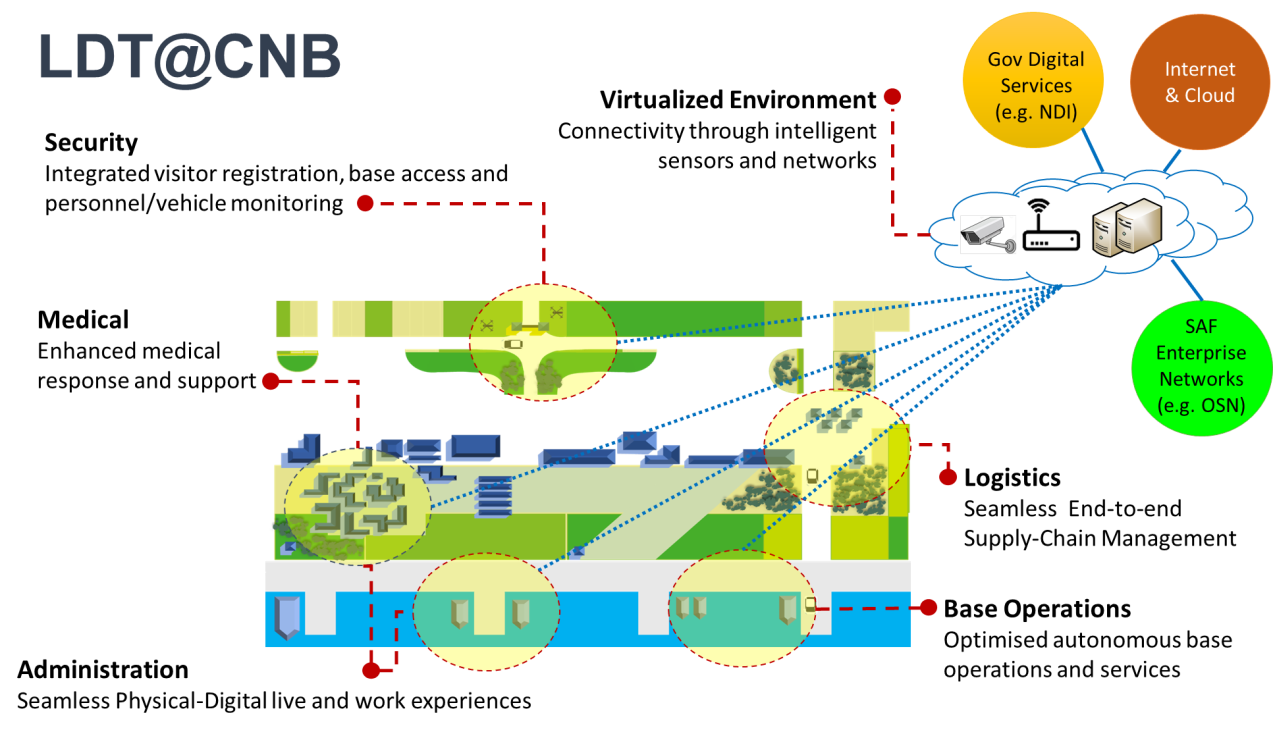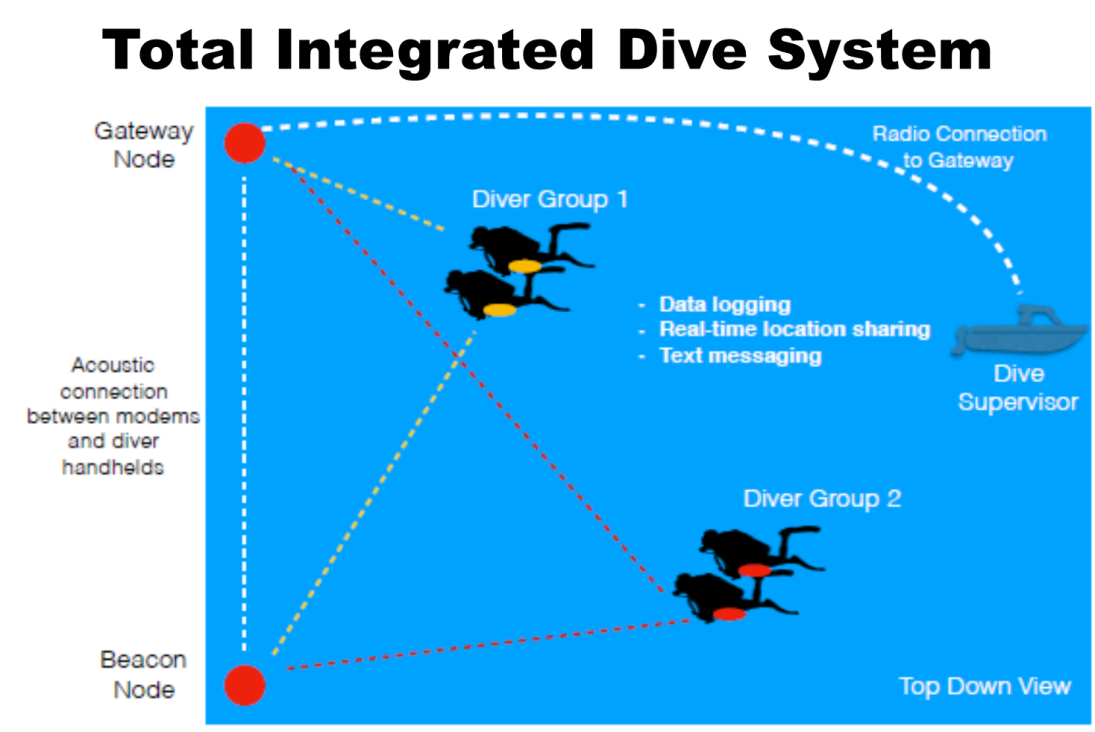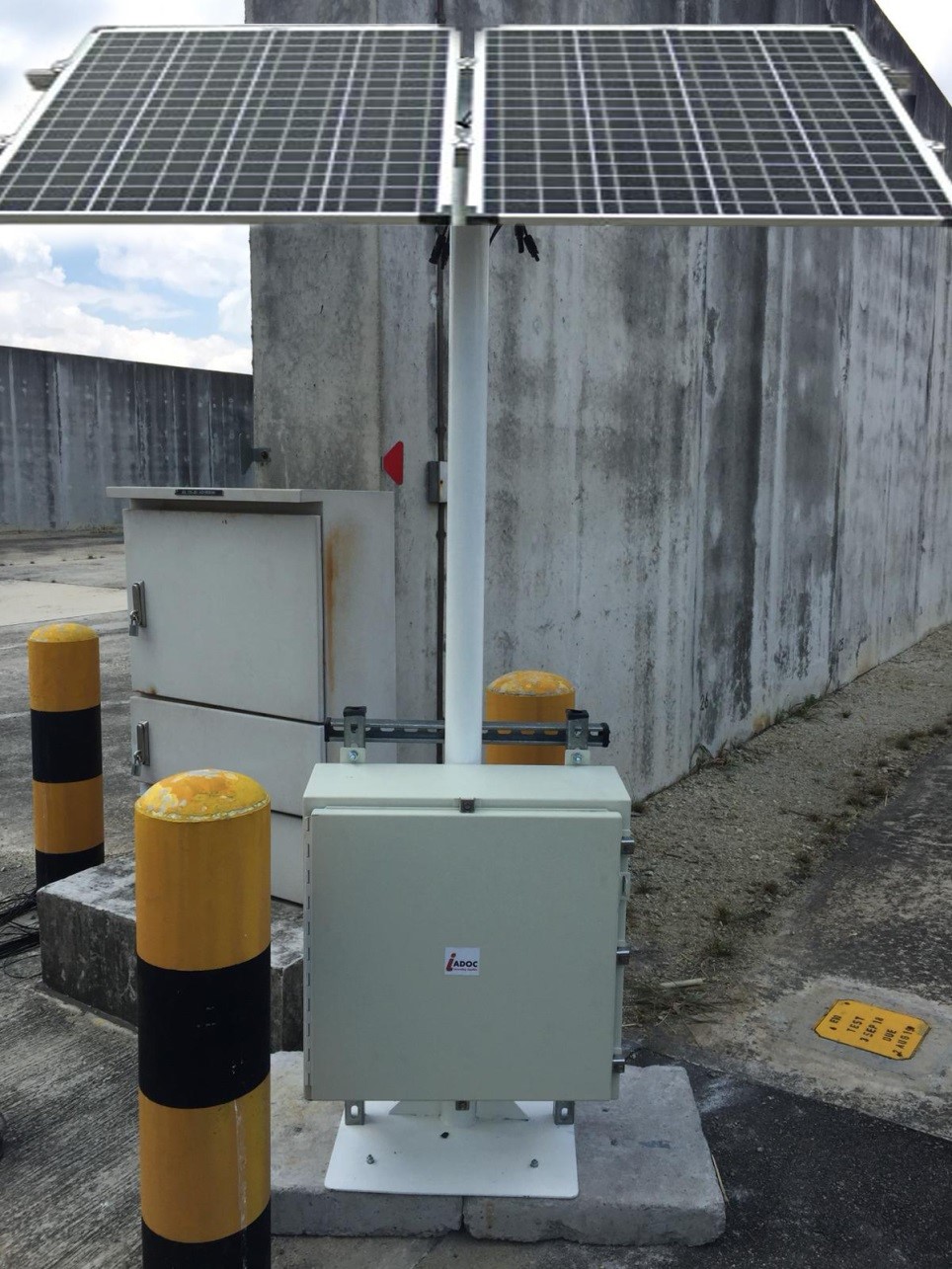 IS19 Innovation Projects
IS19 Innovation Projects

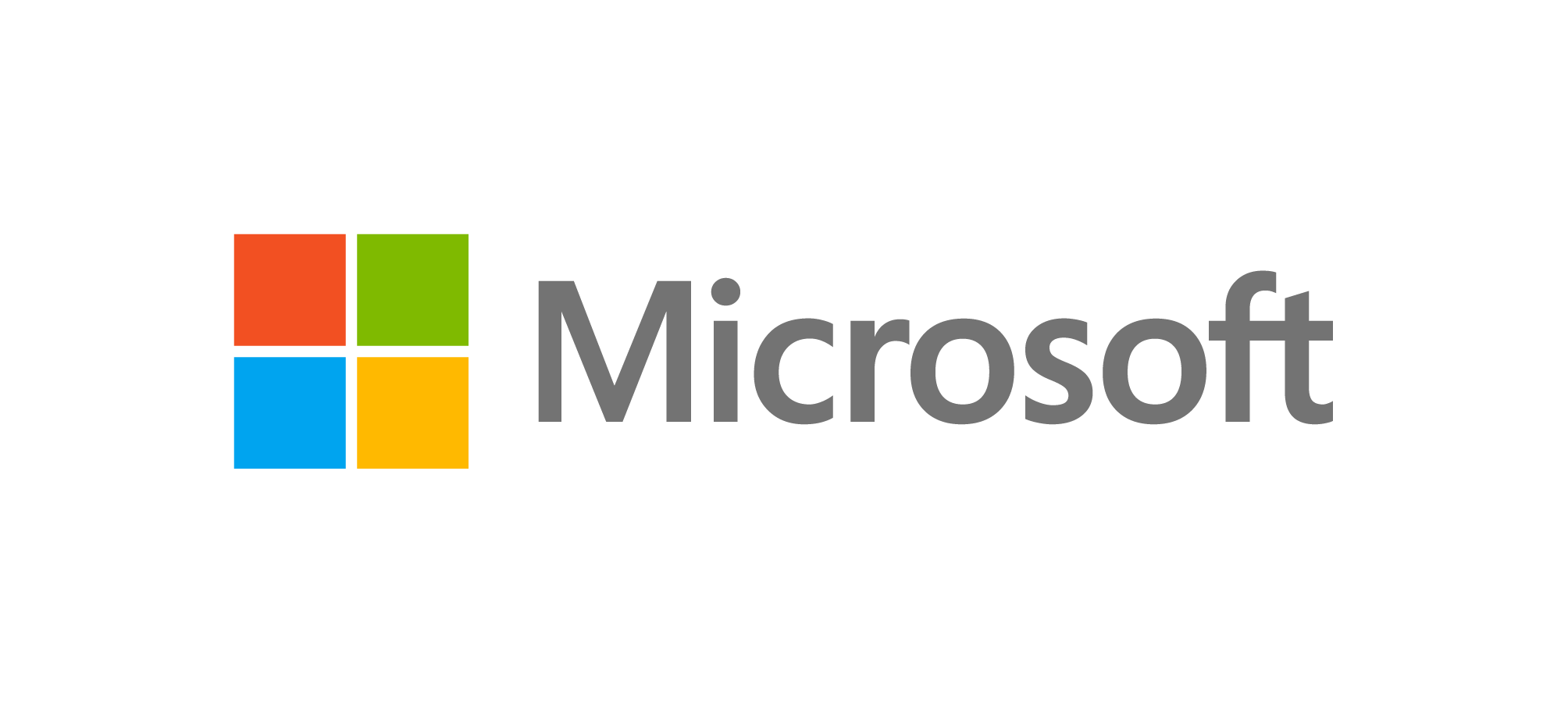
Next Generation Productivity Suite
Microsoft's exhibits will centre around a day in a life of an employee in a modern workplace powered by Microsoft 365 and Azure. Follow him around as he seamlessly shifts from mobile to desktop platforms to collaborate with colleagues, co-author documents, provide advice to a technician remotely through the HoloLens, and connect into a remote virtual desktop to work on classified information.
Visit the booth to try out the HoloLens, which offers an immersive mixed reality experience featuring new components like the Azure Kinect sensor, an ARM processor, eye-tracking sensors and an entirely different display system.
Digitising Maintenance Workflow (Solution by DXC)
RSAF is partnering DXC to develop a prototype that will digitalise the air defence deployment administrative work processes. This prototype system, named SMARTGAD (SMART Ground-Based Air Defence), will automate the Air Defence squadrons’ workflow to reduce administrative overheads, enabling them to focus on their combat readiness. SMARTGAD will also enable users to plan their operations and training better, through visualisation of the deployment readiness from maintenance to logistics to deployment.
Digitising Maintenance Workflow (Solution by MQ Spectrum)
The RSAF is partnering MQ Spectrum to develop a Mixed Reality (MR) prototype solution that complements the SMART Ground-Based Air Defence (SMARTGAD) prototype. The aim is to develop a highly mobile and virtualised hands-free workspace to facilitate multiple work processes and operations. For example, technicians will have live access to tools and resources that are contextually customised for their workspace. Hand gestures and voice command can be used to navigate the MR landscape, providing a seamless way to interact with detailed information or even broadcast live feed for remote support. From the administrative angle, smart-tasks are automatically generated from maintenance due dates, reducing repetitive actions that allow managers to focus on team needs. Some examples include the ability to assess a technician’s fatigue level before assigning the smart-tasks. The manager may also view the engineer’s competency certifications to make the best proficiency match to the task at hand. Completing the entire suite of intelligent digital tools are the Inventory Management, Asset Tracking, Scheduling and Content Management features for enhanced communication and increased efficiency.
Digitalising the Medical Requirements for Aircrew (Solution by NCS)
To transform the daily experience of our active and NS aircrew, the RSAF is partnering NCS to develop a digital solution to improve the administrative process, including issuing of the certificates by medical authorities to the tracking of the different expiry dates. The goal of the solution is to improve tracking and accounting of medical requirement, so as to trigger the right agency and personnel when expiry dates are approaching. The proposed solution will analyse the medical requirements of our aircrew and propose ways to redesign the work processes before introducing digital technologies.
The Volunteer Corps App provides a centralised platform for the HQ SAFVC to inform volunteers on deployment opportunities and receive responses from them. Previously, the HQ SAFVC communicated with the volunteers through channels such as SMS and emails and had to manually collate the responses for each deployment. The process was laborious and time-consuming for HQ SAFVC. Volunteers do not have live awareness of remaining vacancies, which resulted in a negative experience when discrepancies occur. With the mobile Volunteer Corps App, HQ SAFVC can broadcast training availabilities and deployment opportunities instantaneously, and allow volunteers to access the list of approved deployments, receive announcements or news within the Volunteer Corps community and subscribe to opportunities easily. This tremendously reduce the administrative workload of the department to contact and track every volunteers’ commitment, while improving the volunteers’ experience.
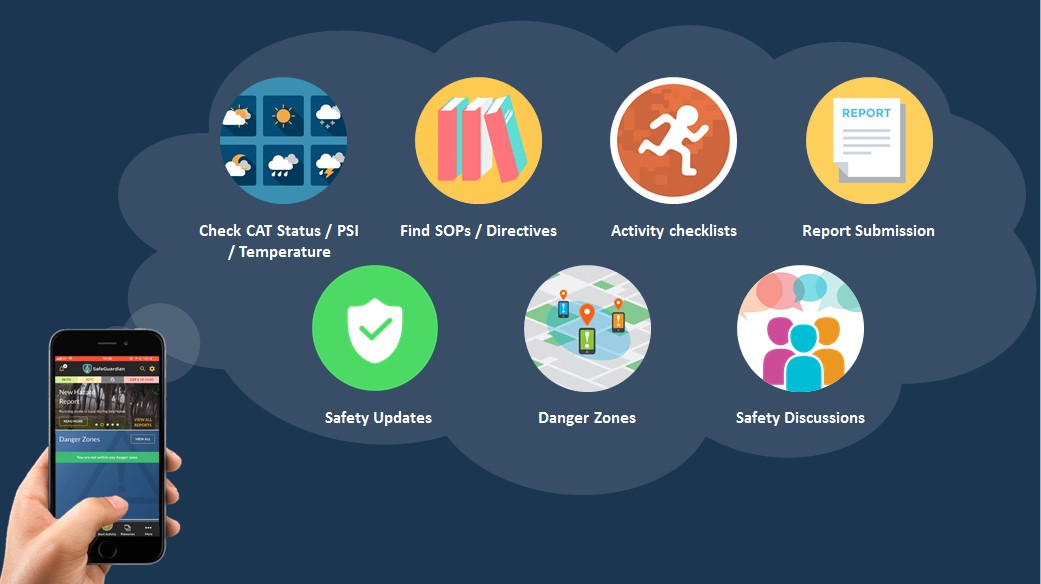
Safeguardian is a one-stop safety app to provide every serviceman with a personal safety buddy that is available anytime, anywhere. Not only does Safeguardian provide every individual with access to safety info and functions at their fingertips, it also taps on the community of users by incorporating the observations from everyone in order to enhance the individual's safety awareness and knowledge.
Safeguardian enhances safety in multiple ways:
- First, it provides every individual with access to safety resources on demand, allowing our serviceman to have safety checklists for their activities always on hand.
- Second, activities in the SAF are often conducted in teams. SafeGuardian enables them to coordinate their preparation for activities simultaneously even though they are dispersed throughout the ship.
- Third, when activities commences, Safeguardian broadcasts alerts to inform nearby personnel of the need to keep clear. This is a pop-up notification akin to a Whatsapp/Telegram message that nudges them to take a look.
- Finally, alerts can also be initiated by anyone who uses the app to report a hazard so that nearby servicemen can avoid it and relevant agencies can address the hazard.

The Mechanised Training Hub is an integration of Integrated Forward Maintenance Hub (iFMH) and Integrated Force Preparation Hub (iFPH). It allows training units to access equipment, vehicles, and maintenance services seamlessly within Sungei Gedong Camp.
The iFPH is a one-stop hub set up to facilitate the full equipping of the armour units for operations and training. The one-stop hub improves equipment serviceability and maintenance, providing an additional layer of checks over a smaller centralised equipment pool. The hub also improves operational readiness as training units would undergo the same force preparation as ORNS units are equipped at the Mobilisation and Equipping Centres (MECs).
The integrated Forward Maintenance Hub (iFMH) holistically strengthens the maintenance support for tracked vehicles in SGC. The iFMH performs more complicated depot-level tasks onsite including maintenance, servicing, repairs, retrofits and upgrades. This leads to 20% cost savings for on-site depot level maintenance and reduce repair duration by 50%.
BUILDING A DATA READY SAF
Repetitive tasks such as keying data into spreadsheets by hand, and tracing a piece of information by sifting through physical documents, spreadsheets and PDFs can be frustrating and mundane.
Currently, the best way to handle this is using VBA, an automation tool included with Microsoft Office. But VBA was released in 1996. The world has evolved and so should we.
That is why we are promoting the digitising of the SAF with Python, the programming language, which would enable us to improve the workflow in any office. With Python, one can convert physical documents or PDFs into editable digital text; or automate the input of information into spreadsheets; or search for information in a large amount of data.
The application of Python is near-limitless. With time freed up from performing repetitive tasks, it creates capacity for other work. It could also spur a change away from paper documents, minimising our carbon footprint and saving money.
Team Members:LCP Timothy ToribioLCP Lee Yee, FelixPTE Lee Tze Wei, Alex Joel
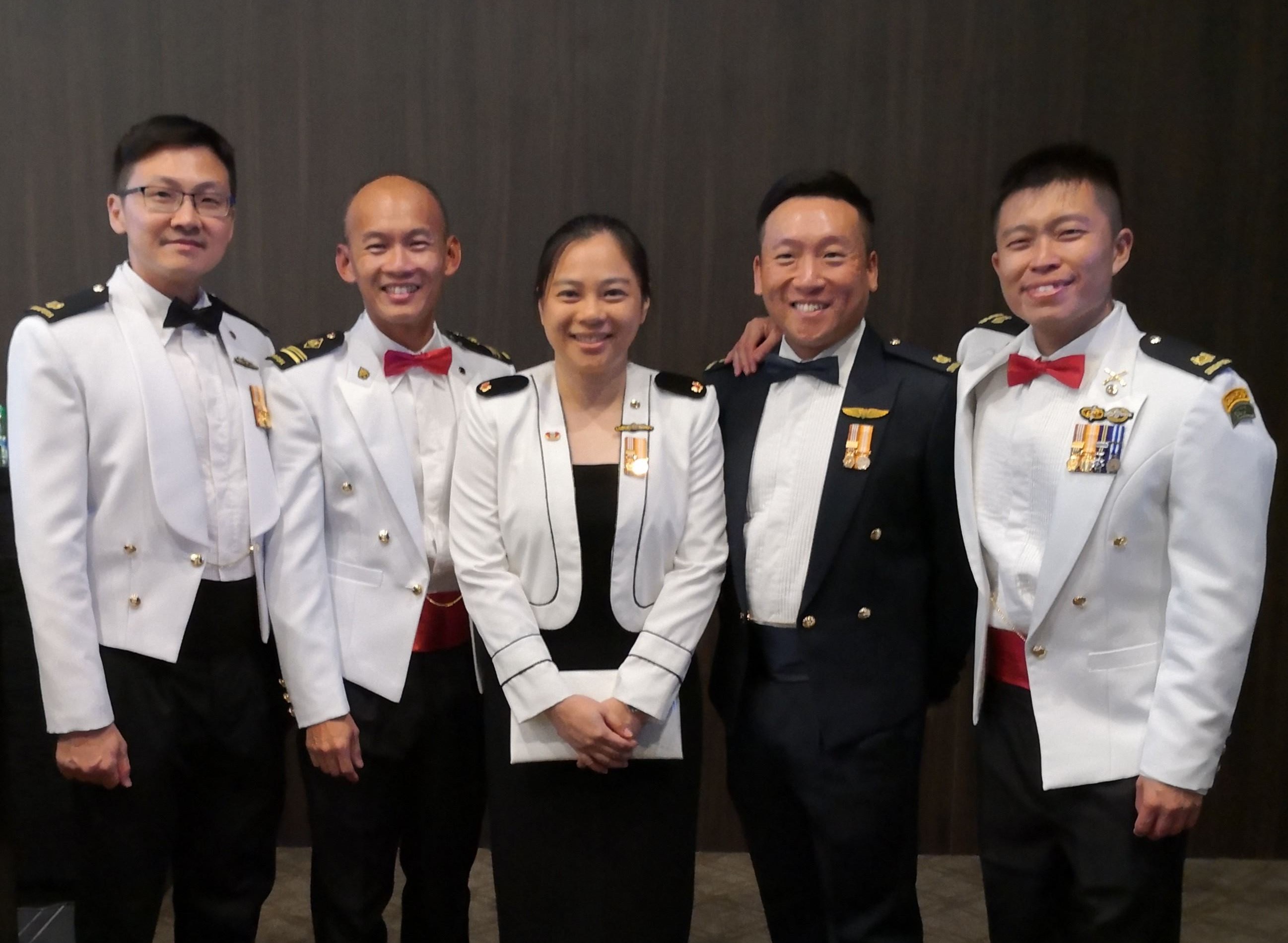
Harnessing Alternative Power – Piezoelectricity (HAPPie)
Modern technology has resulted in the constant increase in demand for electrical power in all walks of life. This has already impacted the network-centric SAF today, and the supply of electrical energy is a key factor in sustaining SAF operations now and for the future. This can be seen in an increase in the battery load that soldiers have to carry, and an increase in the supply chain which supports mobile and outfield units with high power requirements while managing their signature.
What if there's a technology that allows us to harness clean and renewable source of energy which negates the need of that battery load, the need for a supply chain and the need for signature management?
Piezoelectric technology will help us achieve all that, via the conversion of mechanical energy to electrical energy via use of piezoelectric materials powered by humans. Mechanical energy is generated via many opportunities in SAF operations, which may be converted into electrical use. Our team proposes the harnessing of piezoelectric technology, particularly for application within the SAF, to drive towards greater sustainability and operational effectiveness.
Project Leads:MAJ Lester LeeMAJ Wee CathleenME5 Chan Wee Seng
MAJ Ong Kang Guan
Supported by:MAJ Wu Wenjie
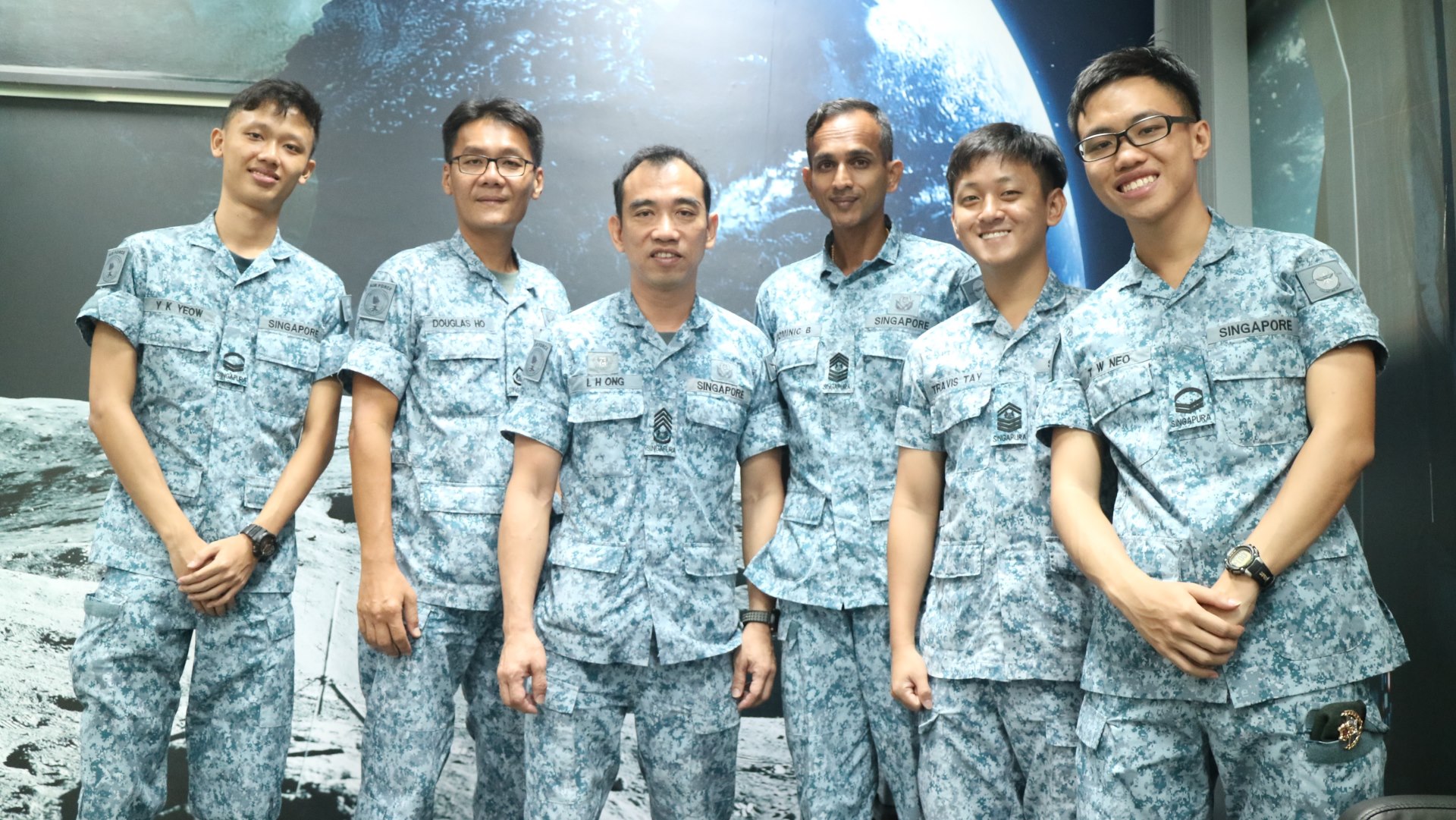
MEDI-Q Mobile Application (RSAF)
Can we make better use of the time spent waiting to see the MO at the medical centre? Can we use technology so that we will be able to turn up close to the MO consultation time?
With our MEDI-Q Mobile Application, it is possible to reduce this negative experience of long and uncertain waiting time at the Medical Centre.
MEDI-Q allows patients to register their visits directly from their personal mobile phone. Patients would be notified of their queue number and the estimated time of consultation at registration. Subsequently, patients would be notified via the app to report to the Medical Centre for consultation with the medical officer 2 Queue numbers in advance.
This way, you will be able to book your consultation from wherever you are and avoid unnecessarily long waiting periods at the clinic for a more pleasant experience at the Medical Centre.
Project Leads:SWO Ong Loo HengMSG Dominic BaskaranCPT(DR) Keith Ching
SSG Travis Tay
Supported by:ME6 M.A. PathiLTC Leonard WongLTC (DR) Hong Dehan2WO Douglas HoLCP TerrenceLCP Matthew Yeow
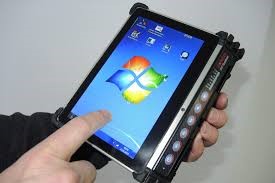
My Go-To Buddy
Trainees undergo the On-the-Job-Training (OJT) phase to allow them to acquire more hands-on experience for platform-specific tasks. They are given a hardcopy “Taskbook” to guide them on the specific tasks they are required to complete for assessment by their supervisors and gain their qualification. In addition, trainees are required to refer to hardcopy manuals for self-directed learning, as well as to follow and observe their supervisors. There is minimal learning support for trainees who are undergoing OJT and limited assessment tool for the supervisors to efficiently collate and sense-make trainees’ performance data over time to identify any systemic issues/gaps and make adjustments to the curriculum accordingly.
With “My Go-To Buddy” (eTaskbook), trainees can look forward to using embedded digital enablers to build competencies at the workplace, to leverage the digitalisation of performance data to improve trainee management as well as to tighten training feedback loop through data aggregation and visualisation.
Project Leads:ME6 Chin Chiap Sing (Team Leader)ME2 Mark PennefatherME2 Go Kwok Pin
ME2 Dexter Ang
Supported by:ME4 Michael TanME4 Wee Pui SengLTC Teo Swee LengSoh Chun Fei

Next Generation Transport System (Army)
The *Next Generation Transport System* (NGTS) is designed as a one-stop Transport request and detailing system. It optimises and delivers transport resources, such as, military vehicles and Transport Operators, commercial buses and vehicles, as well as ground fuel.
As part of digitalisation efforts, NGTS will streamline processes and remove the need for manual forms and logbooks for transport users. The system will use mobile apps to enable users to request and track transport demands real time, and for Transport Operators to receive their tasking directly on their apps. Transport Operators and Dual-vocation drivers will have their training and driving records recorded and made available digitally. Vehicle key access will also be authenticated through the system, further enhancing security access.
Through the tracking of vehicle telemetry and the use of data analytics, NGTS will create a driver's profile for each personnel, and designate the operators to the tasking based on their driving proficiency. Operators will also get feedback on their driving competency, allowing commanders to tailor enhanced training for the operators. This will improve overall transport safety.
Team members:ME6 Jason SimMAJ Desmond LimMr Per Thiam Song (DSTA)
CPL Marcus Lau De Hao

Aggregation of Enterprise (ES) Contracts by Joint and DSTA
Enterprise System (ES) Logs is an integrated logistics system supporting MINDEF/SAF’s Engineering, Supply, Finance, Procurement, Ammunition Logistics, Medical Logistics and Real Estate processes. It consists of seven sub-systems, which were maintained via six different contracts previously. Aggregation of multiple ES associated contracts into a single one achieved synergy in contract management, reduced overheads, reduced lead time for enhancement and achieved better economies of scale. With the aggregation, existing contract Key Performance Indicators (KPI) are enhanced and achieved excellent savings. The established Period Contract enhanced agility to changes and reduced procurement lead time from a month to a week.
Army Ops Costs Saving by Army
With the aim of maintaining Ops Cost growth rate, Army has to review its budgetary requirement and create funding space for new growth areas as part of the Next Gen Army transformation. The Army Ops Cost Working Committee was established in 2018 to systematically scrutinise expenditure for savings and create funding space for new growth areas/ capabilities.
The “3R” strategy, namely, Review, Rationalise and Reduce, was developed to identify innovative ways to stretch every defence dollar while not compromising on defence capabilities and soldier experience. Some of the initiatives that were implemented to reap ops cost savings include:
- Rationalising and tailoring Basic Military Training equipping to basic soldier needs and performing more enhanced equipping based on vocations at later stage;
- Reviewing Common Engineering Services across different C4 equipment and amalgamating maintenance contracts;
- Reducing utilities expenditure through implementing energy or water efficient solutions in camps.

Digital Signature for Finance Documents by Defence Management Group (DMG)
The Digital Signature for Financial Documents provides a framework for the use and acceptance of digital signature in financial documents and bring about greater convenience for ground users. This has reduced processing time for financial processes by up to 70%, and benefitted operations and training especially for units that require cash advances or credits cards for urgent missions.
With digital signatures, users can sign documents securely on their laptops/terminals without meeting in person, eliminating the need for hardcopy documents. Most importantly, digitally signed documents allow recipients to verify the signatory’s identity and are tamper-proof against amendments and auditable.
The Defence Finance Organisation in DMG is the first agency across all Ministries in Singapore to implement a formal framework for digital signatures. Both the Ministry of Finance and GovTech have ensured that government platforms are compatible with the digital signature, and will subsequently amend the Instruction Manuals to introduce guidelines on their use.
Telegram Bot for Blast and Fragmentation Calculator by Army
The calculation of blast evacuation distance takes into consideration the size of the suspicious item reported and additional information from witnesses, and then calculated manually. This process is inefficient and affects the speed of evacuation. A team the Army developed a Telegram BOT to calculate the fragmentation evacuation distance allowing for critical information to be disseminated in a shorter time to other agencies like the Singapore Police Force. The BOT can calculate safety distance based on structured inputs such as the type, weight and calibre of explosives and allow users to plot and share the Fragmentation Distance and Blast Distance via Google Maps. This has resulted in 96% time savings from 60 minutes to 2 minutes, and cost savings of $52,000.
The Civil Resource (CR) Requisition App aims to digitalise the end-to-end process of CR visits and mobilisation exercises. Previously, HQ Transport had to manually generate, extract, verify and prepare information and documents of CR owners. The App now allows HQ Transport to disseminate activation information to the CR owners and request for information updates regularly. Transactions between the HQ Transport and CR owners such as CR owners’ records and asset information are captured and stored within the app for reference and analysis. This reduces the preparation time of official documents, minimises human errors, and creates a means of communication with the CR owners for future mobilisations and operations.
Today, workplace defect reporting is done primarily by raising a job request on the enterprise IT-enabled Facilities Management System (ITeFM) on an internet-enabled computer. To bring about greater convenience, EzFix is a mobile application that enables MINDEF/SAF personnel to report workplace defects on their mobile phone. The app enables users to report defects on-the-go and features a secured photo-taking feature in Green Zones, allowing for defect assessment and report of rectification to be executed effectively. EzFix is integrated to ITeFM, thereby enhancing process efficiency, governance and compliance.
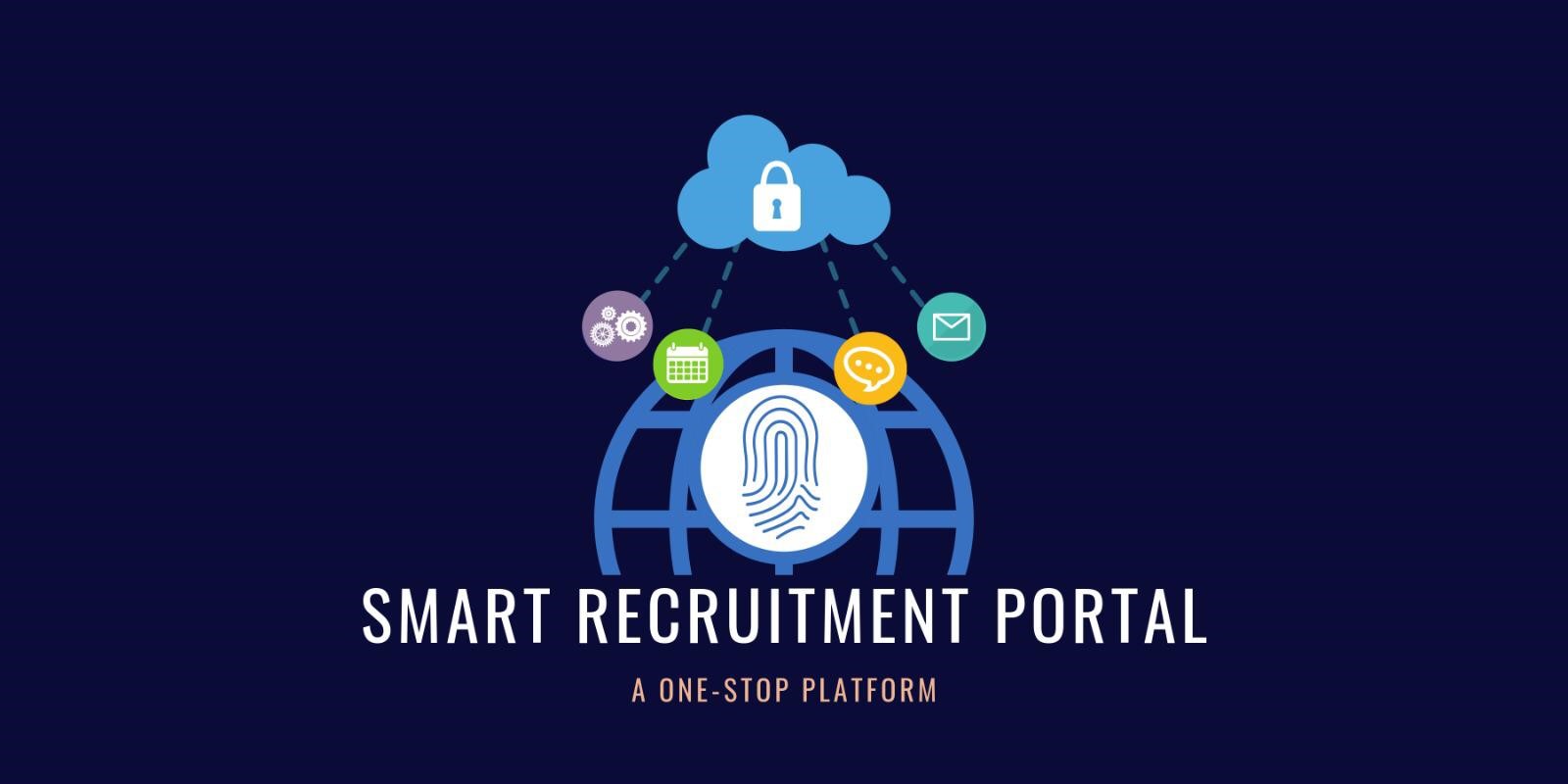
The smart recruitment portal is a one-stop platform for applicants and administrators to perform recruitment activities, such as apply for interested vocations, submit supporting documents, receive updates on their application status. Applicants will have greater control over the application process. Administrators will have a more efficient workflow due to the automatic collection of applications, assessment of eligibility, and recommendation of the next course of action. Housed on cloud, the portal allows for collaboration between multiple administrators simultaneously. The portal will also send out periodic messages to notify the applicant of incomplete applications, and targeted publicity material to a captive audience.
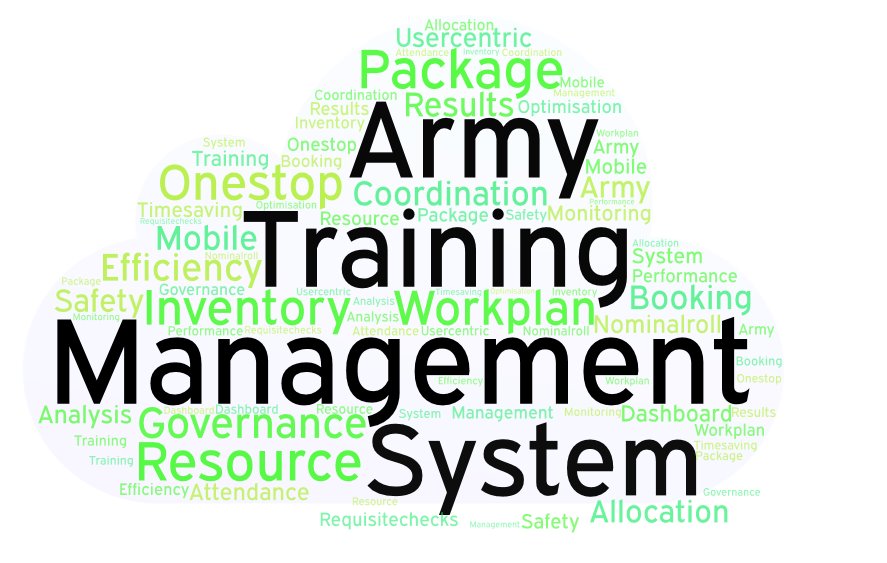
The Army Training Management System (ATMS) is designed to be the one-stop IT platform to support end-to-end training management processes such as work planning, resource allocation, conduct of training, and training and performance analysis. Equipped with Artificial Intelligence in the work planning process, scheduling of training activities is automated. The ATMS hosts training resources on a centralised repository, allowing the user access at a glance and to book training resources in 2-steps. With live capturing of data uploaded from a mobile platform, the ATMS enables on-the-go analysis to optimise resources and improve soldier performance. The ATMS will be a key enabler for the Army Training Hub to innovate and transform its business model through digital solutions to improve training experience and optimise our limited resources.
Data Analytics for RSAF Training (D.A.R.T.) is an e-assessment training solution to enhance the training of Air Traffic Controllers in the RSAF. A combination of descriptive and predictive data analytics will be used to help trainees better understand their training proficiencies. The management will also be able to utilise these data analytics features to monitor training readiness levels while maximising the use of training resources. In the long-term, mining of training performance data will help enhance the overall training system by identifying potential “red flags” which may indicate areas of improvement, as well as providing indicators to streamline and improve the training syllabus.

The AI-Powered Netflix of Learning
Did you know that the time taken to close a skill-gap through enterprise training has increased from 3 days to 36 days (more than 10x!) in just four years?
Several factors contribute to this major shift. A key reason is the complexity of the technical and soft skills required to survive in the Cognitive Era. It is no surprise therefore that over half of the world’s CEOs call out both the lack of the right skills and a skill-enablement strategy as a key area of concern.
IBM recognises that the answer to this problem is in the very technology that has led to the disruption. Over the last few years, we have been exploring and benefitting from the use of AI powered approaches to mitigate skill gaps and improve the employee experience. We are now poised to bring these solutions to our valued clients across the globe.
IBM’s Digital Learning Ecosystem uses AI to realise the concepts of personalisation and speed to competence for both employees and learning professionals. The goal is to empower employees to enjoy custom learning experiences while enabling the organization do more for less. A true win-win!
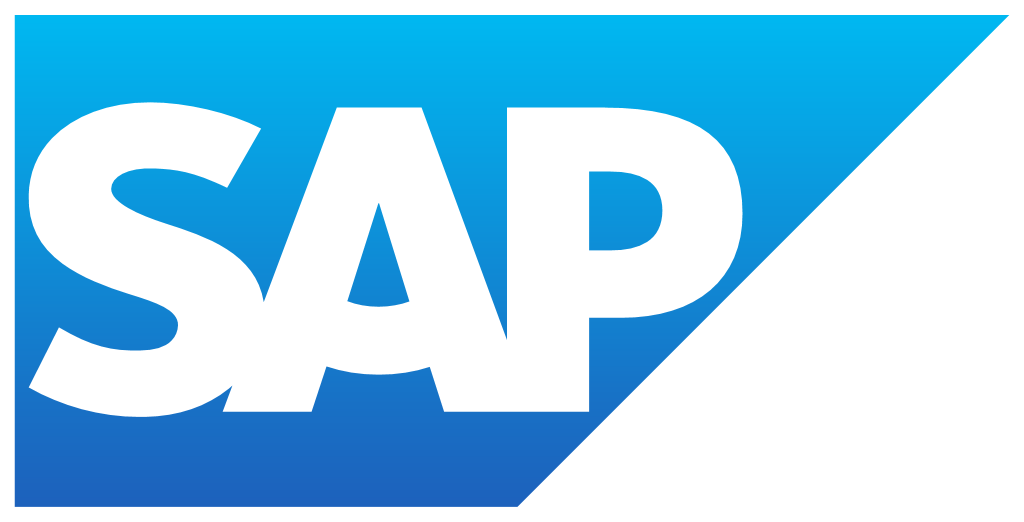
SAP Litmos Learning Management System (LMS)
SAP Litmos is an online learning management platform that enables smarter, faster corporate training. The platform comprises a powerful Learning Management System (LMS) and a content-rich Course Catalog — the ideal combination to improve L&D programs by automating tasks such as course creation, assignment, tracking, and fore-commerce.
For administrator, the SAP Litmos platform makes it easier to manage the entire learning training program from system implementation and integration to ongoing administration. For learners, the SAP Litmos platform streamlines how they interact with courses and content, providing instant access to the ongoing training they need.

Developing A WoG Learning App
As part of the nation-wide Smart Nation Initiative to infuse digital literacy into national consciousness to support Singapore’s transformation into a Digital Society, the Civil Service College (CSC) has embarked on a transformational journey to partner with 12 Institutes of Learning (IHLs) in a whole-of government effort to support transformation of learning in the public sector. The ideation of Learn.gov.sg platform conceptualised through the signing of agreement with the IHLs and Udemy for Government, an approved massive open online courses provider. The partnership dovetails with the public service-wide digital learning platform that the CSC is developing for its officers, which aims to augment officers’ traditional mental model towards learning and improve knowledge retention. The IHLs have also partnered with CSC to curate relevant SkillsFuture Series modules that will train the public sector workforce in important emerging skills area, such as digital literacy, which is a core skill for public officers. Upon creation of a CSC account, officers will be able to search from a catalogue of online courses, where the online digital platform will allow them 24/7 access to bite-size content through mediums such as videos, infographics, articles and quizzes. In addition, the platform allows officers across the entire public service to be connected, facilitating cross-agency social and peer-learning, and creating a more connected government in the process.
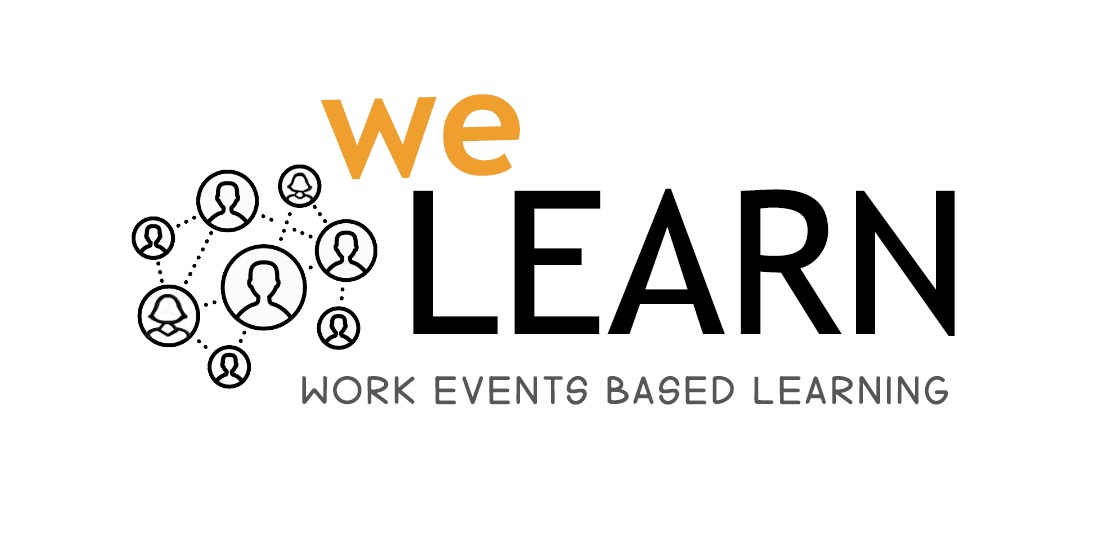
Learning as One with weLEARN
Work Events based Learning System, known as weLEARN is a learning solution co-developed by Centre for Learning Systems (CLS), SAFTI MI and DSTA to encourage learning as one organisation. It enables us to:
- Better align the outcomes and tasks within a domain across different entities to establish a holistic and common picture of the domain’s performance
- Grow a collective pool of experiences and insights as individuals actively consume and create lesson identified/learnt and insights from his/her work experiences
- Tackle systemic concerns through analysing captured data, such as observations and lesson identified/learnt captured from the doing work
weLEARN involves a workflow redesign to align outcomes across units so that emphasis is placed on the purpose and impact of individuals’ work, and using technology to provide a holistic and common picture of the organisation performance and a timely evidence-based feedback loop. It is currently on trial to improve training safety so that commanders are empowered to make data-driven decisions to improve solders’ performance.
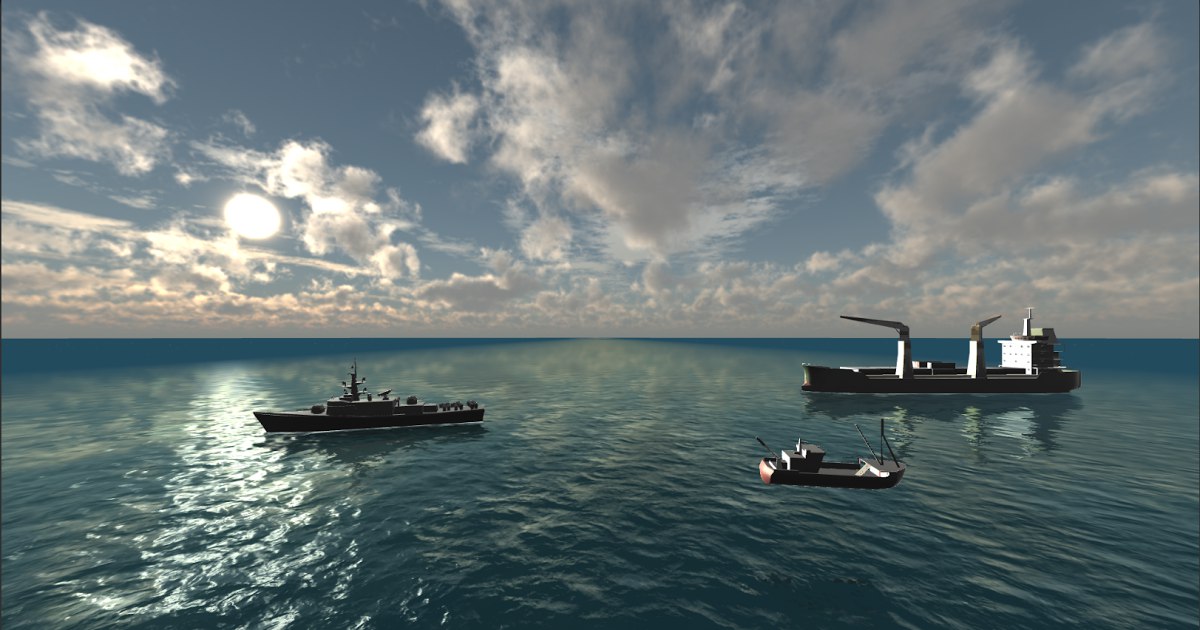
The project is designed to allow naval aviators to conduct ship recognition training in a realistic and safe environment. Through incorporating Virtual Reality (VR) technology, students are able to conduct ship recognition training simulating the Electro Optical Sensor System (EOSS) onboard the S-70B Seahawk. Factors such as operating altitude and airspeed can be adjusted to provide a true-to-life flying experience. Weather conditions including sea state and rain conditions can be tuned to varying degrees of intensity to create an immersive environment. Trainees are also able to choose from a library of ships to ply the seas with selectable source and speeds, presenting realistic aspect of view at different heights and ranges.
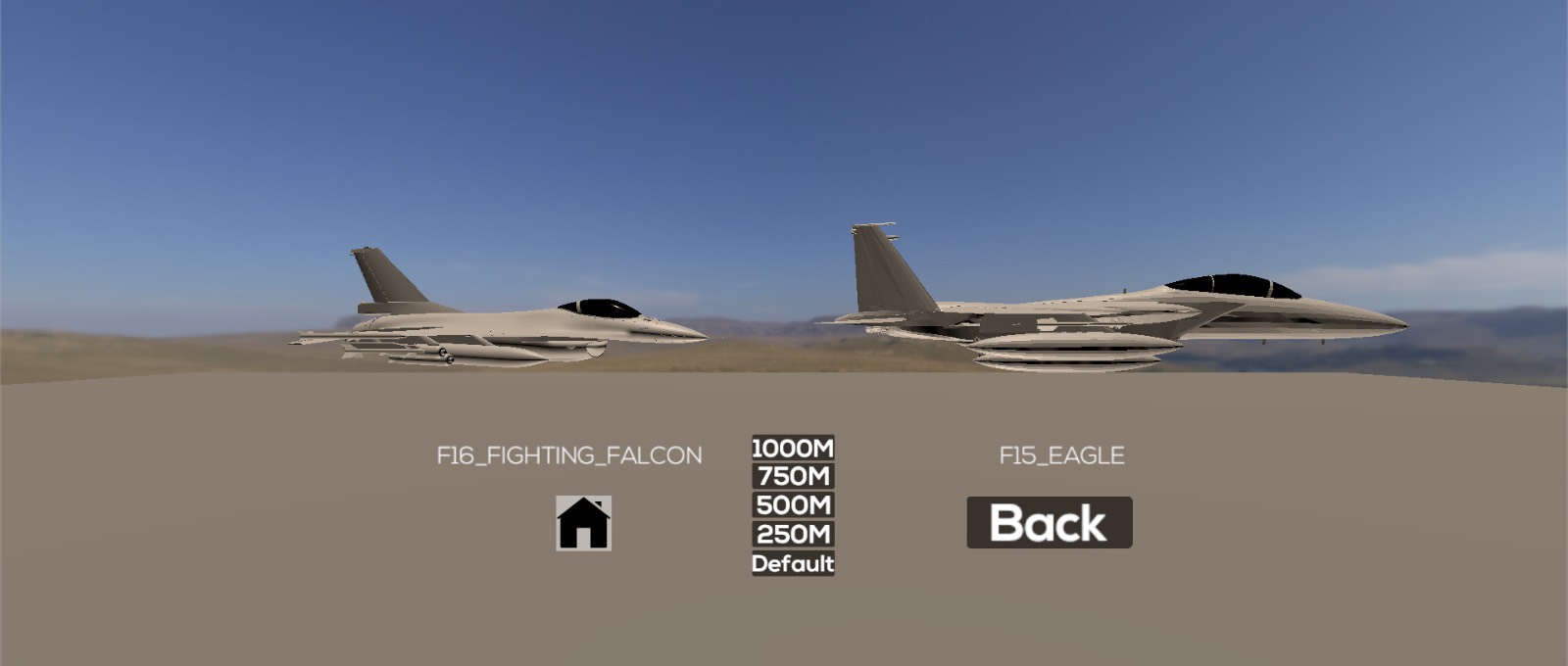
Virtual Reality - Dynamic Aircraft Recognition Training System (VR-DARTS)
The RSAF Ground-Based Air Defence (GBAD)operators are trained to identify and acquire aerial threats visually to prevent fratricide. Currently, GBAD operators are trained to have a basic understanding of the various air platform features, shape and size, followed learning to recognise static images of aerial platforms in various scales. Enhancements could be made to provide a better learning experience. The Air Force Training Command and Division Air Defence Group collaborated with Singapore Polytechnic (SP) to develop a prototype Virtual Reality (VR) Dynamic Aircraft Recognition application which introduces a high level of realism into Aircraft Recognition training with dynamic 3D models in virtual flight as well as 3D models for learner to learn about the basic features of an aircraft.
MantisX allows trainees to improve shooting fundamentals in a safe environment through a simulation. MantisX reduces overhead and help to optimise training resources. Trainees trained on MantisX are also more proficient during live-firing, increasing overall operational effectiveness. Connected to the firearm, MantisX utilises a gyroscope to trace real-time movement such as capturing the trigger pull and gun movement after recoil, which is sent to a mobile application for real-time feedback and instruction. With MantisX, trainers can better identify patterns in trainees’ shooting technique, tracks individuals’ performance over time, and provides customised coaching tips to improve overall shooting performance.
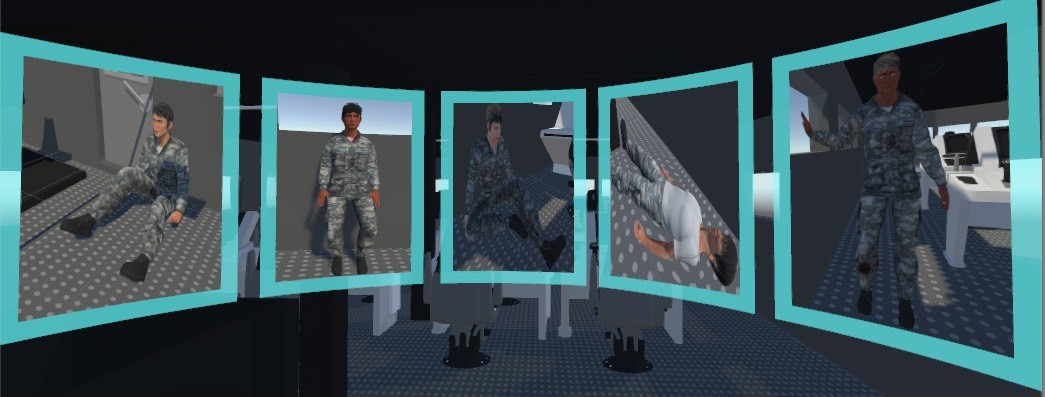
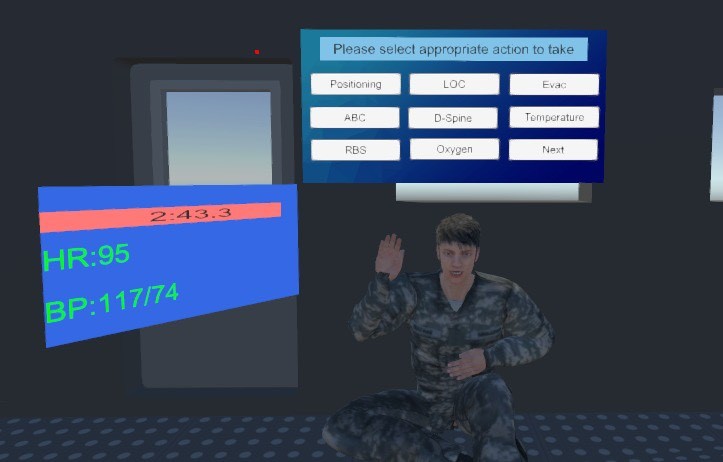
The application of Virtual Reality (VR) technology in the medical field is fast becoming an accepted modality for simulation training of medical personnel worldwide. In Navy Medical Service (NMS), new technologies are being pioneered to provide non-invasive simulation training, achieving safe outcomes to elevate the proficiencies and confidence of its medical personnel. As such, the Medical Doctrine and Training Branch from Navy Medical Service has collaborated with Temasek Polytechnic to develop a VR medical simulation training prototype which enables medical personnel to experience realistic 3D medical emergency scenarios integrated with immediate digital feedback. The true value of training in a VR environment is that medical personnel can practice and hone perishable skills in a learner-centric and risk-free immersive environment. Medical skills assessment via such a platform allows training tasks to be intuitively tracked and monitored, making it one of the most objective assessment tools currently available.
Specific to this prototype, the RSN medical personnel will encounter a shipboard collision which introduces a myriad of injury profiles of varying severities. They will be required to respond to each casualty, and experience various multiple casualty scenarios at different parts of the ship, calling for urgent, efficient and accurate triage responses within a safe and realistic environment.
This initiative harnesses the strength of Artificial Intelligence and Machine Learning to create a Digital Robot to assist the trainers to answer any questions and enquiries that the trainers may have regarding training, referencing directives, operating manuals and safety regulations.
Through Machine Learning, the Digital Robot will replicate recommendations/ answers pooled from Subject Matter Experts (SMEs), Authorised Operating Materials and lessons learnt from pervious case studies.
By harnessing Artificial Intelligence and Machine Learning, the system reduces human shortcomings, such as fatigue, emotion and limited time. It will also give a consistent performance across multiple usages by the users. As the Digital Robot gained experiences, their precision, accuracy and speed will improves, and even using predictive science to forecast future preventive actions and mitigating measures for training, future-proofing our training.
The Digital Robot will be part of a Trainers’ Mobile App which would include the following the common function applications:
- Notifications on Training News Flash/Safety and Training updates
- Most commonly used contacts e.g. Army Safety Hotline
- Most commonly used directories e.g. Nearest restructured hospitals details, automatically convert to navigation mode once selected
- Search function
- Augmented Reality Tools as Training Aids for Table-Top Exercises or War-gaming
he BLB+ Bridge Operation DIY Simulation program provides additional bridge operation training opportunities for trainees to learn the processes of launching and retrieving the bridge in a virtual environment before any live asset execution. The programme simulates the actual bridge operation steps and procedures in various modes and provides users with a visual of the actual components at work during specific steps of the operation to enhance users’ learning experience. Additionally, a deliberate add-on step feature to reinforce the importance of safety checks during the operations. This effort has greatly reduced the need of using actual assets for basic trainings, reduce maintenance cost, and time with the live assets are better invested on other training components. This program will be used for the just-in-time training for active units, refresher training for NSmen, and currency training for regulars.

A commercially-off-the-shelf camera was integrated with the sniper rifle, such that trainers can view the live-feed of soldiers' point of view. This allows the trainers to identify if the soldiers have acquired the target effectively and correct the errors on a timely basis.
The OneNS app aims to be the “Super App” of the SAF, empowering our servicemen – from pre-enlistees, active personnel and NSmen – with the ability to conduct a variety of physical and digital transactions through a single, unified mobile app on their personal mobile phone.
Features include notifications on action items and information such as upcoming medical appointments or In-Camp Training preparation, training-related information and latest updates to the training programme. It aims to give commanders access to near real-time monitoring of manpower and training matters, and employ the use of a unique identifier to allow for more convenient booking-in and out of camps and bases.
Its clear and intuitive interface, augmented by an ecosystem of NS-centric back-end services, will also allow other digitalisation efforts to be easily integrated into the app’s architecture. This plug-and-play concept would enable other digitalisation start-ups across the SAF to seamlessly integrate into the OneNS app, thereby reducing the need for servicemen to download a variety of other mobile applications.

Personnel are deployed to ensure the safety and security of the RSN vessels when they undergo maintenance at shipyards. This includes preventing unauthorised access of the vessel. The Unmanned Safety and Security System (USSS) was developed to enhance the safety and security of the ship in yard through 24/7 real-time monitoring, while reducing manpower deployment. CCTVs paired with data analytics software helps the shipyard duty team to maintain oversight at a centralised shipyard control room and respond to incidents when required.
Designed in-house, the deployable Automated Target Detection (ATD) capability utilises MobileNet and a Deep Learning algorithm to detect targets-of-interest. With the ATD, personnel are able to significantly reduce the time taken to detect targets accurately over a large area, allowing them to focus on other crucial tasks. Developed in support of the ASEAN Summit 2018, the ATD can be implemented across the SAF, particularly for units that require the detection of targets over a wide area of operation. The algorithm is easy to train and implement, and with more training data, the accuracy of the algorithm can be further enhanced.
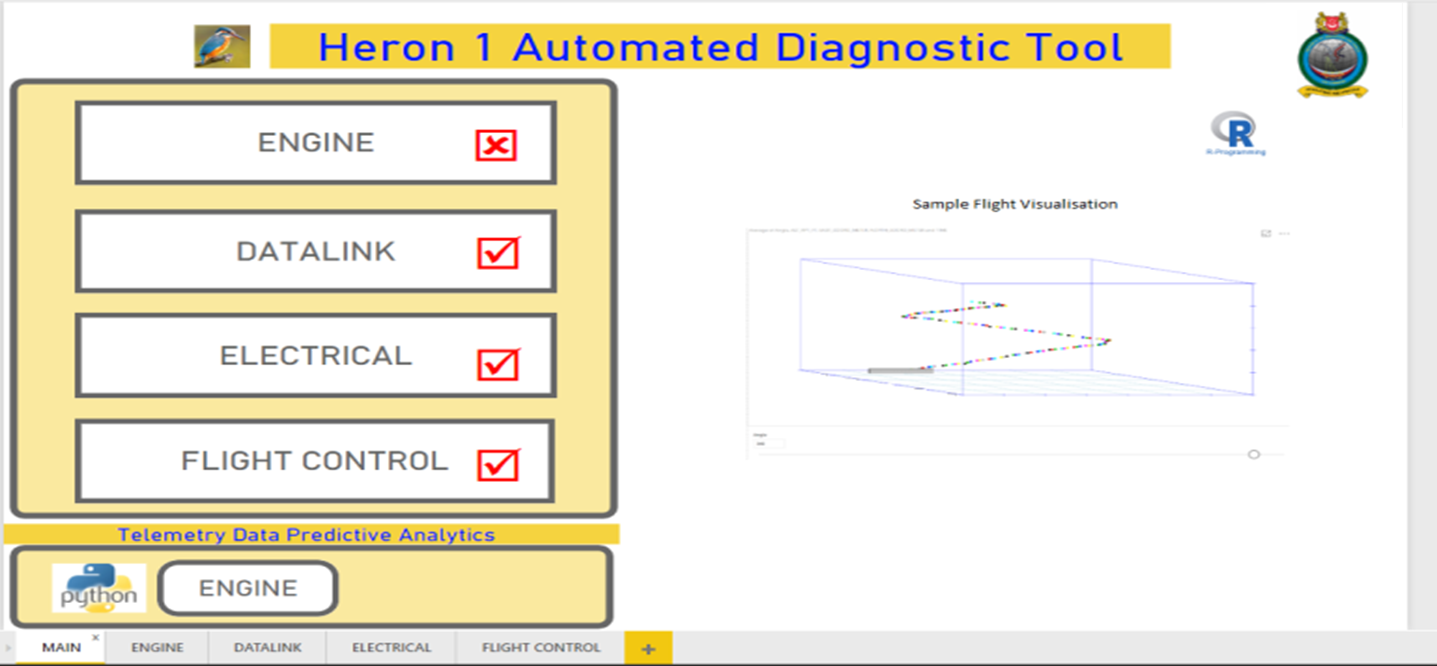
The Heron 1 Automated Diagnostics Tool harnesses the full potential of the Heron 1 telemetry data to automate anomaly detection with enhanced data visualisation and unsupervised machine learning.
Dashboards for individual aircraft systems such as engine and datalink were developed to allow for non-time based graphs to be plotted, overcoming the restrictions in the OEM’s software. Based on past flight data, unsupervised machine learning--specifically the Isolation Forest method--is used to detect anomalies.

SECURE AND GOVERN WHAT MATTERS MOST - DATA
The use of massive volumes of data necessitates stringent attention on compliance and governance because organisations need to protect critical information and discard digital wastes systematically to strengthen the reliability of the ecosystem.

AI for Textual & Unstructural Data
Taiger is a Natural Language Processing based AI company that helps organisations to improve their knowledge processes through the deployment of semantic search engines, document extraction software and virtual assistants. Government agencies and enterprises that hold large volumes of textual and unstructured data can benefit from this. Taiger will showcase their technology and share client case studies from HDB, Santander, MCI, AGC, IMDA, NAC and MCCY.
Data Science Department (DSD)-DCTD, MINDEF is developing a medical knowledge base that will provide a comprehensive situation awareness of the SAF health and generate insights to reduce soldier injury. Fusing Medical, Training and HR data into an integrated knowledge base allow us to perform data exploration and build interactive dashboards, for descriptive analysis on causes of injuries and soldier attrition. DSD is has worked with partners to develop two dashboards thus far.
Together with the Centre of Excellence for Soldier Performance (CESP), DSD developed a dashboard to study soldier’s physiological data across different training tempos. This dashboard integrates the soldiers’ physiological data alongside other medical and training data, allowing for CESP to visually explore the factors causing soldier attrition and study the correlation between training programs, physiological effects, medical visits and out-of-course incidents.
The second dashboard, the Army Attrition Dashboard, integrates a variety of Medical and HR datasets and automates soldier attrition reporting to Unit Commanding Officers (COs). This dashboard provides Unit COs with a comprehensive view of their soldiers' attrition status and enables units to perform data exploration and uncover insights on the drivers of soldier attrition.
Policy Knowledge Base fuses quantitative and qualitative data within the defence policy domain. It is an advanced search and retrieval system based on Natural Language Processing enabling analysts to extract relevant information efficiently to drive data-based policy making.
The Policy Knowledge Base was developed by the Data Science Department (DSD)-DCTD, MINDEF, who is incorporating the following enterprise data analytics systems.
Enterprise Data Analytics Platform (EDAP)The Enterprise Data Analytics Platform (EDAP) is a secure centralised enterprise data storage system equipped with enterprise data analytics software, QlikSense Data Visualisation and SAS Advanced Analytics. With the EDAP, users can input data sets or request for access to stored data sets, so as to draw useful insights. Discover how the EDAP can bring convenience to your work by approaching the Data Science Department (DSD)-DCTD, MINDEF for more information on EDAP as well as data science (DS) tools accounts.
Analytics, Collaboration & Experimentation (ACE) LabEquipped with DS software, the ACE Lab is a sandbox environment designed for analysts and technology partners to share ideas, collaborate and exchange knowledge. At ACE Lab, users have access to data science resources to answer business questions and solve business problems through their data. Discover how to tap into the ACE Lab resources to help you solve your problems by approaching the Data Science Department (DSD)-DCTD, MINDEF for more information.
The SAF is vulnerable to infectious disease outbreaks due to its inherent close living and training environment, particularly among the trainee population. A programme was developed to leverage the SAF electronic records system to strengthen the SAF’s outbreak detection capabilities and improve situational awareness of SAF’s force health. Existing surveillance of potential infectious disease outbreaks is dependent on the camp Medical Officers to track and notify the Biodefence Centre (BDFC). A Natural Language Processing (NLP) programme was developed by BDFC and the NUS Center for Infectious Disease Epidemiology and Research to extract key clinical information from the SAF’s electronic medical records, and present the data for further sense-making by BDFC. With the programme, the SAF has improved situational awareness of force health trends, gained comparative insights to the SAF versus national infectious disease trends, and is able to use the data to monitor and determine potential epidemiological linkages and headcount.
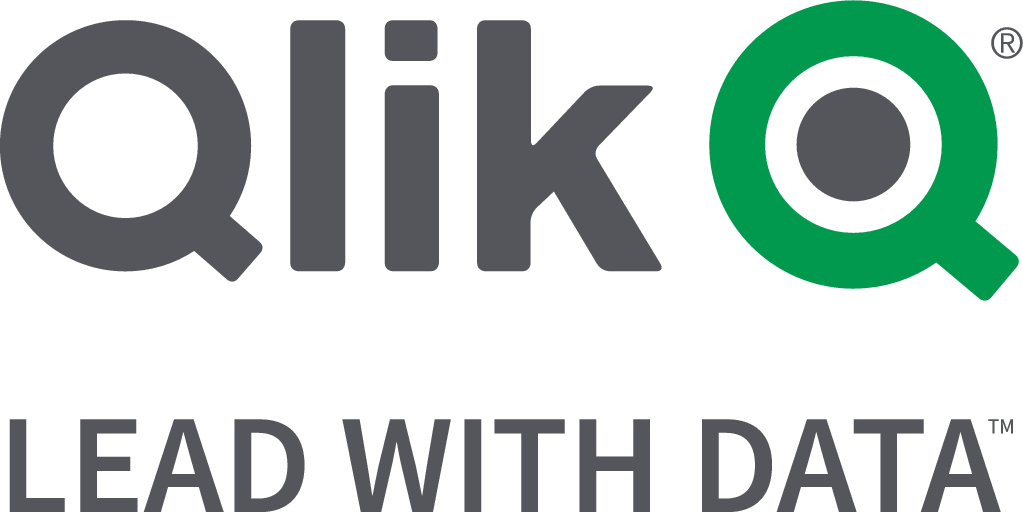
How to Exploit Data Intelligently?
Qlik will demonstrate how real-time rider telemetry can be collected, visualised and analysed instantly using their "Champcycle", a stationary bicycle connected to sensors. Qlik will also showcase projects where data analytics dashboards were used to improve decision making in the domains of manpower, logistics, finance, medical and cybersecurity. Qlik is deployed in the MINDEF intranet for users to exploit data more intelligently.
The Integrated Health Screening Program (iHSP) is an IT module created by 1 Medical Squadron (1 MS), which aims to streamline work processes and reduce the number of visits for each serviceman for their SAF Health Screening Program (HSP). The iHSP module enables servicemen to go for blood tests and be reviewed by the Medical Officer in a single visit.
Thus far, the pilot trial involving medical centres across the RSAF has been highly successful with significant cost savings and man-hours saved for both NSmen and Regulars undergoing HSP, as well as for the medical centre personnel who conduct the HSP. Moving forward, 1 MS is also working with the team of DSTA/NCS engineers to incorporate the “iHSP” into the greater architecture of PACES 3 (SAF Electronic Medical Records system) to benefit other SAF medical centres.
Slides [PDF, 1.3Mb]
The SAF’s NSF resource is expected to decline 30% by 2030. Concomitantly, our combat deployable manpower resource is affected by attrition, with musculoskeletal injuries having consistently accounted for the bulk of PES downgrades. Despite stringent training safety standards and processes, past studies have shown that the majority of injuries arise directly from training-related activities. With wearable technology and data analytics as key enablers, training can be matched to the individual soldier’s physiological state. Equipping commanders with the capabilities to measure and interpret soldiers’ physiological state will improve soldier performance, enhance training safety, and reduce soldier attrition.
AmmoZone gathers like-minded collaborators to re-design SAF Ammunition Command's end-to-end ammunition supply chain business for efficiency and effectiveness. AmmoZone aims to enhance security and user experience, create paperless transactions, drive efficient processes, and reduce ammunition wastage.
The areas of focus are to develop user-centric processes and to enhance infrastructure for operational efficiency. Seamless end-to-end workflow would be designed to expedite the ammunition collection and return processes. Stocktaking would be digitised to reduce man effort and minimise human errors. Equipment harnessing smart technology would be introduced to improve productivity.
Weather monitoring is an important part of ensuring flight operations in the RSAF are conducted safely and effectively. Personnel in the flying Squadrons make use of open-source weather radar displays provided by the National Environment Agency (NEA) to maintain awareness of the current weather conditions over Singapore and the training airspace. However, users would have to manually pull up the various radar displays and also visualise the positions of the airspace boundaries and navigational waypoints, making it unintuitive and labourious.
To solve this problem, an automated weather radar display was written using Microsoft Visual Basic. The open-source weather radar display from NEA is overlaid on a geographically accurate Powerpoint slide along with the various airspace boundaries and navigational waypoints. This displays information in a clear and intuitive format, allowing personnel to interpret the information more quickly to make timely and effective decisions to support flying operations.
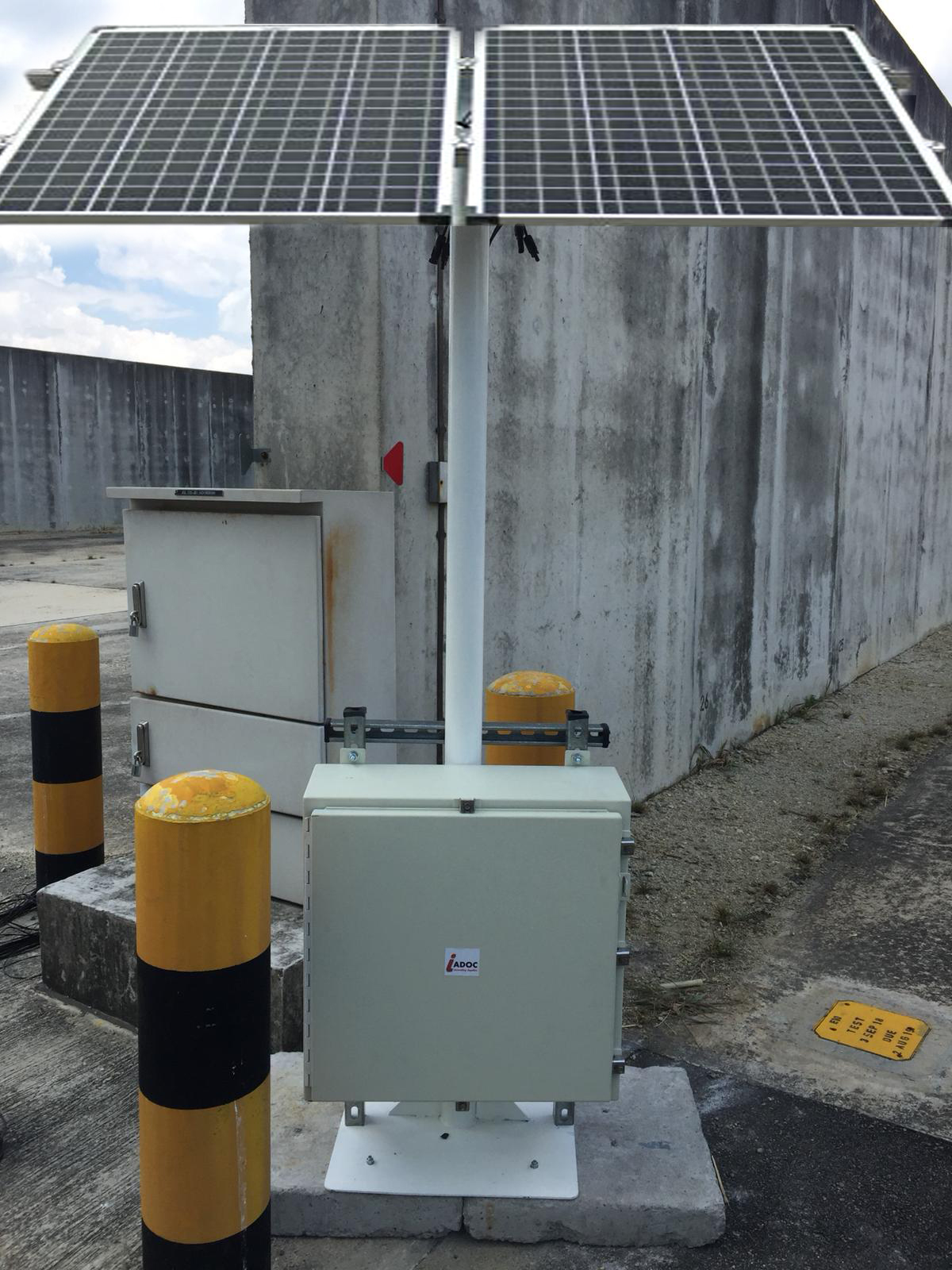
Previously, the SPYDER Launcher had to travel to deployment sites for checks on the network serviceability. This method required a substantial amount of manpower and time.
ME4 Lim Koon Bin and ME2 Por Keng Boon thus embarked on developing a more innovative way of accomplishing the checks to allow their squadron to do other works. They designed a cost-effective and sustainable solution that uses solar energy to remotely monitor the connection points. This solution has reduced the manpower and time needed to conduct regular and adhoc checks on the system.
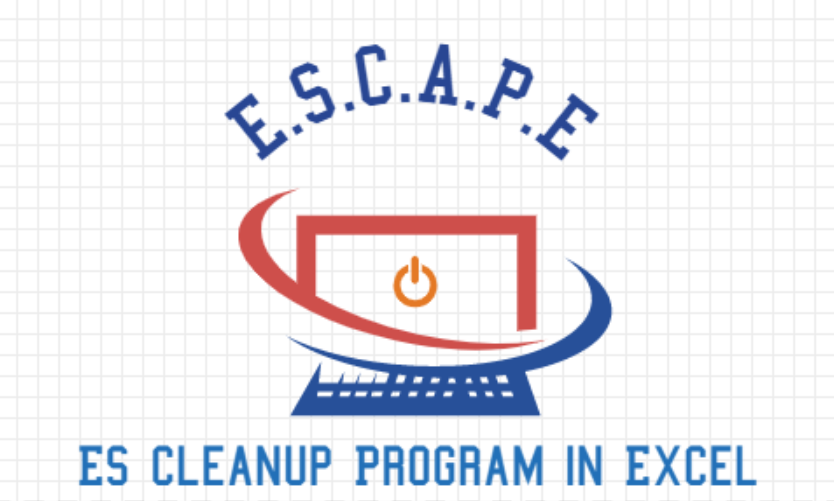
Project ESCAPE (ES Clean-up Automation Programme using EXCEL)
The ESCAPE tool automates the extraction process of jobs from the Enterprise System (ES) into a formulated excel sheet that intuitively presents the overview status of the ES jobs. The tool is efficient, user-friendly, and does not require personnel well-versed in the ES to interpret the results.
This tool has been commended and validated by AFI, and AFI is assisting in proliferating the tool to the AELO community.
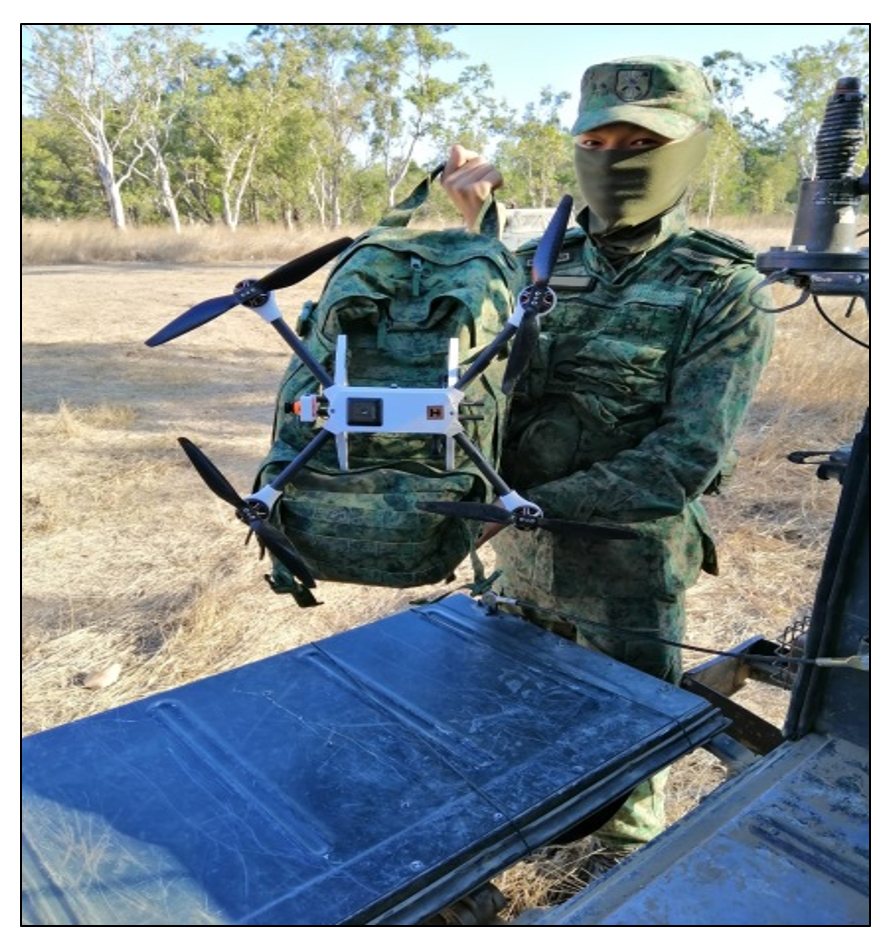
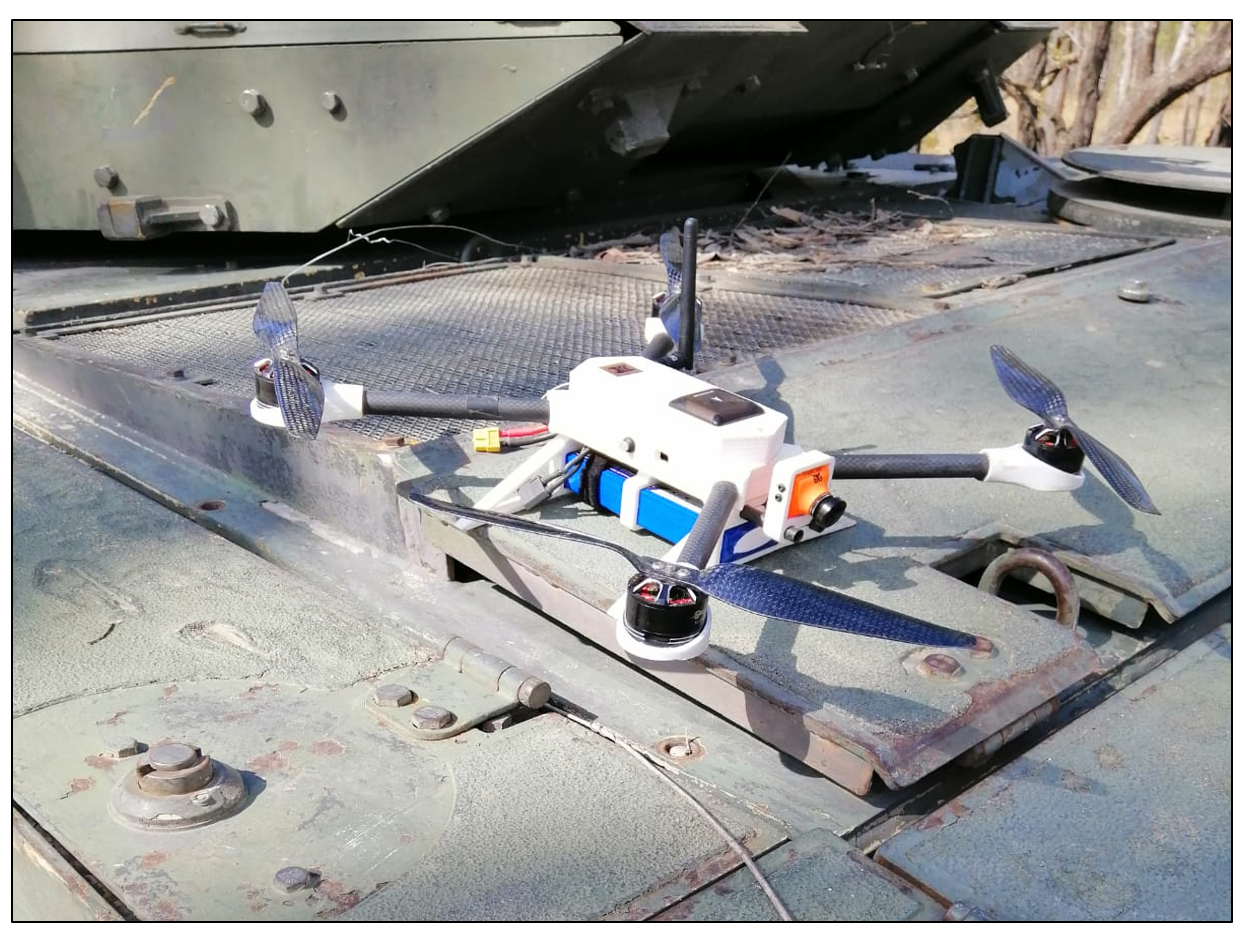
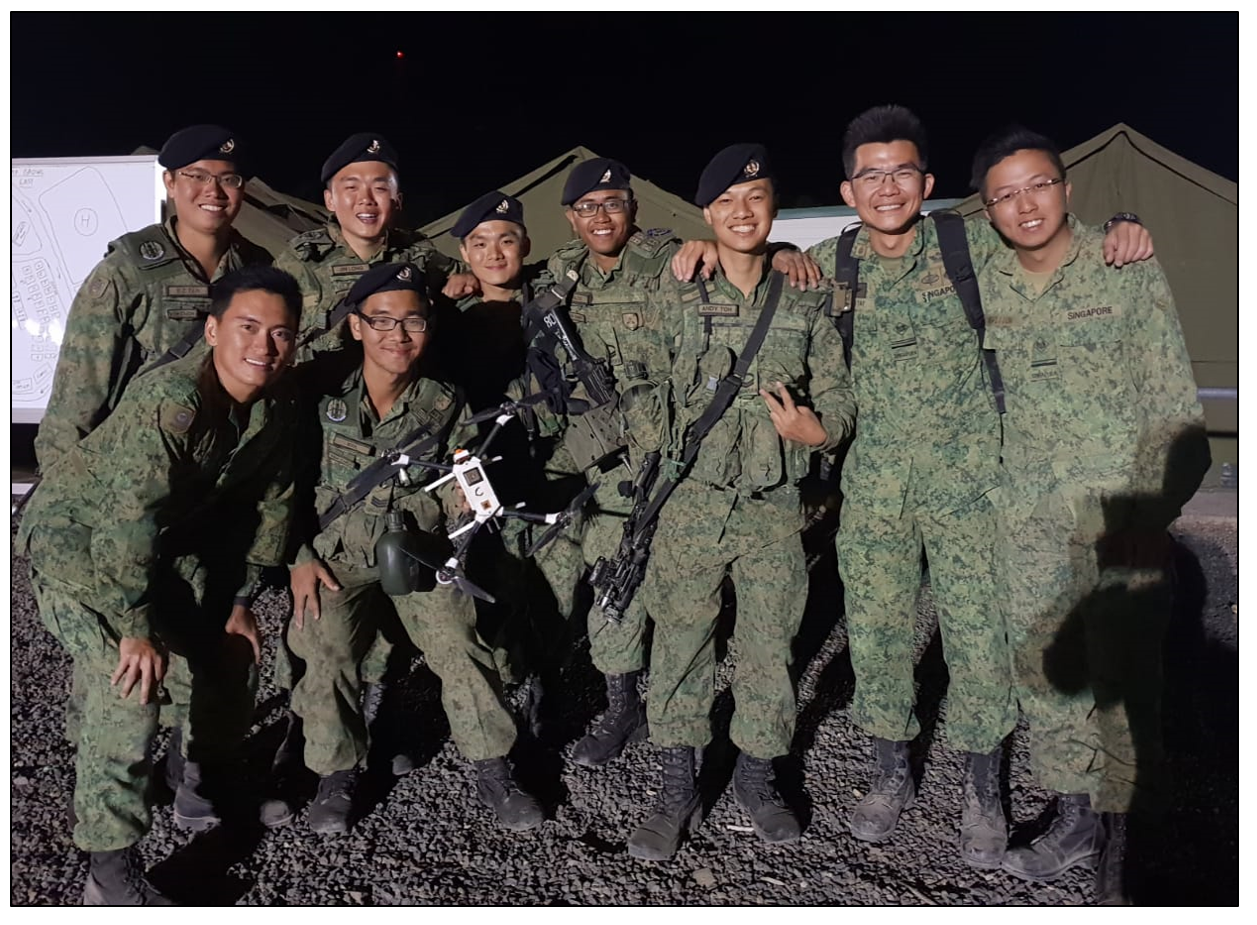
Challenge
The advancement in Unmanned Aircraft Systems (UAS) technology has resulted in the proliferation of Commercial-Off-The-Shelf (COTS) UAS components. To date, most commercial drones are developed for specific purposes, such as aerial photography and racing, providing minimal room for modification. In addition, there are also inherent issues with leveraging COTS drones for military uses for reasons such as (1) data security, (2) parts obsolescence, (3) maintainability, (4) modularity and (5) costs.
Solution
The team from MES leveraged Additive Manufacturing (AM) and existing COTS components to develop a 400mm DIY drone in-house. The in-house designed drones provide the flexibility in meeting specific military requirements in terms of flight performance, capability, and customisation.
The drones offer value propositions such as (1) mitigating potential supply and security risks, (2) reducing turnaround time, (3) customisable for evolving operational requirements, (4) reducing overall cost, and (5) developing deep expertise in drone technology as the team has to be proficient in developing drone flight controller using Field Programmable Gate Array. These drones were developed over a span of four months with four different iterations as AM allowed multiple iterations of the drones with minimal wastage.
Next Gen Asset Preservation System
The preservation of SAF’s fleet is accompanied by laborious and time-consuming maintenance tasks. Hence, to continue providing a high operational readiness for the SAF, this puts a heavy demand on manpower to manage and maintain fleets.
However, meeting this demand is increasingly challenging, and not sustainable against the backdrop of shrinking manpower and rising labour cost.
As such, the next generation Asset Preservation System (APS) aims to overcome these issues by reducing manpower requirements with smart technologies such as artificial intelligence (AI), autonomous systems, smart tools, data analysis and visualization.
Benefits of these five initiatives will see a reduction in manpower requirements, better cost savings, as well as an increase in operational and maintenance efficiency.
Acoustic Diagnostics reduces 50% of the inspection time taken by an Army engineer to detect leaks in rubber seals on vehicles prior to preservation. With the Intelligent Scanning and Analysis System (iScan), external defects on the vehicle are detected in about 1 min, as compared to 40 min taken by an engineer climbing up and going under the vehicle.
Automated Inspection Vehicle (AIV), enabled by machine vision, replaces human inspectors by conducting surveillance on preserved vehicles to give early warnings on visually identifiable defects such as oil leaks and deflating tyres.
The Integrated Smart Charging System (ISCS) eliminates the need for maintenance crew to manually crank start engines to charge batteries by using an automated battery monitoring system to trickle charge when needed. Oil Analysis System (OAS) ascertains how far we can stretch the oil change intervals, generating cost savings for each year of extension.
Further manpower and cost savings can be obtained from the early detection of potential CM through fluctuations in oil health.
The Live Digital Testbed (LDT) at Changi Naval Base (CNB) is a policy-technology testbed to accelerate MINDEF/SAF digital innovations in a secure manner. Once validated, the concepts can be readily scaled across the SAF.
Established as the testbed to pilot future Smart Base Concepts for MINDEF/SAF, LDT@CNB offers:
- A realistic and large-scale test environment with a wide range of environmental archetypes and a large user population (up to 2000 residents and visitors) for projects to conduct realistic and large scale testing – once proven in LDT, teams are confident projects are ready for full-scale implementation.
- Secure testing of Internet-of-Things (IOT) applications by providing a replica of MINDEF/SAF Enterprise Networks which is connected to the internet. This enables end-to-end validation of projects in a secure, low risk manner.
LDT has supported the testing of 10 digital innovation projects for MINDEF/SAF, including SafeGuardian, Predictive Maintenance, and Audit without Auditors, which will be scaled for use across SAF. Some ongoing initiatives include field-testing MINDEF/SAF digital innovations such as leveraging the National Digital Identity for Base Access Control and using Video Analytics for Personnel and Vehicle movement tracking to enhance base surveillance coverage.
Video Analytics for in-base Surveillance
Within bases, there is a need for comprehensive and persistent surveillance so that threats can be detected early and responded to swiftly. However, bases are inherently large and require significant manpower to conduct surveillance, protection, and response.
This use case focuses on the surveillance aspect of base security. Exploitation of video analytics will greatly improve the persistence and coverage of base surveillance both within and outside of base while alleviating the strain on resources in the manpower-intensive field of security. As a proof-of-concept, this use case will demonstrate the ability for automatic personnel and vehicle tracking at CNB through the use of Video Analytics such as facial recognition, human re-identification, and licence plate recognition. Leveraging the Live Digital Testbed infrastructure at CNB, the output video analytics metadata from this use case will be assessed for feasibility of fusion with the National Digital ID information from the Smart Base Access Use Case for more robust multi-modal detection and tracking capabilities.
Smart Base Access
- Existing base access clearance involves multiple layers of coordination and administration between visitors, hosts, Security Branches, and Security Troopers. While base security is paramount, the security process is laborious, inefficient, and manpower-intensive. Compounded with shrinking National Service numbers, the use of Smart Technologies will simplify work processes, increase work efficiency, and reduce manpower needed for security screening.
PROBLEM STATEMENT/ PAIN POINTS
Due to lengthy screening processes, long queues of up to two hours’ waiting time are experienced at the Pass Office (PO) daily. Long queues at the Access Control Area (ACA) are also experienced during high-key events, such as NSmen mobilisation. Although increasing the number of registration counters / ACA lanes may reduce the waiting time, this solution is highly limited by manpower and system availability.
Additionally, current security policies require all visitors to be escorted by their hosts at all times. A large amount of time is thus spent by the hosts escorting visitors instead of focusing on their primary works.
VALUE PROPOSITION/ HOW IT WORKS
Smart Base Access system uses a combination of COTS technologies (Facial Recognition, mobile app, Bluetooth/GPS tracking) to simplify personnel screening and tracking. This is how it works:
- Visitors will be able to submit visit request anywhere, anytime through a mobile app. Visit request will be automatically routed to host and security agencies for verification. An alarm will be triggered when anomalies are detected and a notification will be sent to the visitor upon approval.
- On the day of visit, visitors will be authenticated via facial recognition and mobile app. As they enter the base, the visitors will be virtually tracked and escorted using Bluetooth/GPS tracking. Any unauthorised access will trigger alerts for follow up actions.

The F-15SG Bomb Release Unit - 47 (or BRU-47) is a weapon delivery component which carries bombs or external fuel tank. The BRU-47 undergoes scheduled maintenance in the servicing workshop. During the maintenance, Air Force Engineers (AFEs) have to manually transport the BRU-47 from the loading bay to the maintenance stands. The methods employed to lift and transport the component, which weighs approximately 40kg, could potentially cause injuries to the AFEs' fingers. To eliminate these hazards, the AFEs from 7 AELG designed a jig to safely transport the BRU-47. The jig has a simplistic design, and shows that simple ideas can make a big difference in workplace safety.


The RSAF improved the procedure to rectify the F-15SG aircraft Wing Position Lighting defect. The in-situ replacement of LED Modules within the Wing Position Light procedure improved aircraft availability and serviceability, reducing the duration of repairs from 48 hours to four hours. It also eliminated the need for aircraft towing, which incurs additional risks, especially during night operations. Boeing has promulgated these procedures into its World Wide F-15 Aircraft Operators’ Technical Manual, benefitting global users of the F-15 aircraft.
The F-16C/D Electronic Warfare Mission System Intermediate-Level Tester (ILT) comprises an internal 115V AC power supply converter to power up the component for daily rectification and 6-monthly scheduled servicing. In the event of a defective power supply convertor, maintenance of the affected aircraft would be compromised as the components would have to be sent to the overseas Original Equipment Manufacturer (OEM) for repairs. Such tasks would cost up to S$300,000 and could take up to nine months.
Harnessing their out-of-the-box thinking and deep technical knowledge, Air Force Engineers (AFEs) from 5 AELG performed a technical study on the ILT to develop alternative ways of supplying power to the Mission System. With engineering guidance from the OEM and the System branch from AELD, the AFEs were able to reconfigure the ILT wiring to receive the power from external sources. With this new initiative, the Mission System can be rectified within one week instead of nine months.

The Portable Under-Vehicle Surveillance System (PUVSS) enhanced the security operations conducted by the RSAF Force Protection Squadrons. The PUVSS is a lightweight (10kg), weather resistant, portable, and versatile undercarriage surveillance system. It is also equipped with motion sensors, a panoramic camera with high beam LED lights, as well as data storage capability, allowing a full scan of the undercarriage of vehicle clearly with a playback function to review the scanning of any particular vehicle if necessary. The PUVSS is currently in use at seven locations across APGC, and was even loaned to the Singapore Police Force to assist security checks at the National Day Parade 2019.
The murky waters of Singapore make it hard for the Naval Diving Unit supervisors to track divers during training and operations. Additionally, divers rely on floats and lines for communication, thus limiting the ability to convey clear messages between the divers and their supervisors.
The introduction of the Total Integrated Dive System (TIDES) solves these two problems. Through the use of a gateway of nodes and underwater beacons to establish an underwater network similar to Wi-Fi, TIDES allows people on the surface to establish a diver’s location and depth, and also allows for communication with the diver.

Cutting-edge Development Environment
Pivotal will be demonstrating a cutting-edge development environment and toolchain, currently used to develop some of the most recent software adopted by the RSAF. Visitors are welcome to take a look at their pairing station, the fully automated testing and security pipeline, and the rapid deployment infrastructure. You can even try your coding skill by writing a little bit of code on the Pivotal system!
With the changing technological landscape and increasing organisational demands, it is necessary to enhance enterprise agility to achieve secure and fast digital deployment at enterprise scale.
The Digital Factory brings together the skills, processes, and resources to shorten the timeline from prototype to delivery by about three times. With existing manpower and digital infrastructure, teams can focus on building, testing, and iterating their ideas with users quickly. Project owners are no longer required to raise their own Approval of Requirements and procurement, which will help to speed up the process. Pioneering the establishment of Continuous Integration and Continuous Delivery (i.e. CI/CD) capabilities, the Digital Factory enables a faster deployment of enhancements to our digital solutions.
This project showcases Contrast Security's Next Generation Application Security (AppSec) technologies and their unique capabilities to seamlessly integrate with Continuous Integration and Continuous Delivery (CI/CD) pipeline using Contrast Jenkins plugins.
The fundamental challenges that legacy AppSec tools are facing to support today’s modern software development approaches/methodologies (e.g. CI/CD, Agile and DevOps) are (1) inaccuracy of code scanning tools resulting in large number of false positives, (2) scanning takes time and slows down the pipeline, and (3) lack of protection on the fly for evolving applications. Contrast Security's Next Generation AppSec technologies can identify vulnerabilities in custom code with enhanced CI/CD pipeline, address Open Source Software (OSS) security, versions, licencing, composition and utilisation, and provide instant attack protection once an application enters production.
Designed from the ground up to support modern software development lifecycle methodologies such as DevSecOps and Agile, Contrast Security's Next Generation Application AppSec technologies aim to resolve challenges that legacy AppSec tools are facing to support today’s modern software development approaches/methodologies. These challenges are (1) identifying vulnerabilities in custom code with close to zero false positives, (2) addressing OSS security, version, licensing, composition and utilisation, and (3) providing instant attack protection once application goes into production.
Since its incorporation in 2014, Contrast Security has raised $122 million in four rounds of funding with the latest Series D in February 2019. Their investors include Warburg Pincus, Battery Ventures, General Catalyst, M12 (Microsoft’s Venture Fund), AXA Venture Partners, and Acero Capital.
Y30 - 01 Technical Brief - ACCURATELY ASSESSING APPSEC WITH THE OWASP BENCHMARK PROJECT
Y30 - 01 Technical Brief- 5 WAYS RASP TRANSFORMS YOUR APPLICATION SECURITY PROGRAM
Y30 - 03 White paper - INTERACTIVE APPLICATION SECURITY TESTING (IAST)
This project showcases how Shift Left Development (SLD) embeds security testing processes and automated tools within a typical Continuous Integration and Continuous Delivery (CI/CD) pipeline to improve time-to-market and cadence for application development.
MQ Spectrum has designed a secure CI/CD pipeline which embraces software development practices such as Agile development while upholding high standards of governance and security, i.e. DevSecOps.
DevSecOps departs from traditional software development by shifting operations and security considerations “left” to the early stages of development. The secure CI/CD pipeline automates security compliance processes from the start of development. Developers will have access to the necessary tools to perform security reviews during development so that flaws can be rectified continuously, hence decreasing the time-to-market.
With a secure CI/CD pipeline, software development can be fast, flexible, and continuous without compromising security and compliance.
Traditional network security approaches e.g. TCP/IP (Transmission Control Protocol/ Internet Protocol) was designed based on implicit trust, with a “connect first, authenticate second” approach. In today’s hyper-connected and highly adversarial threat landscape, this approach puts organisations at risk to security breaches.
The Software Defined Perimeter (SDP) solution is a dynamic, identity-centric network security architecture designed for cloud, intranet, and hybrid environments. Operating on the Principle of Least Privilege, the SDP grants visibility and access to information based on the authorisation of the user, i.e. the concept of “authenticate first, connect second”.
The SDP solution creates a dynamic and secure network segments between a source and destination system. Typically, the source is an endpoint system, and the destination is a business application. This reduces the attack surface area by hiding network resources from unauthorised and unauthenticated users. Through authenticating identities instead of IP addresses, SDP eliminates the network security vulnerabilities and complexities associated with traditional perimeter-centric solutions, such as over-privileged access and third-party risk.
Meeting the needs of today’s increasingly mobile workforce, SDP provides a cost-saving, dynamic, and unified secure access solution which simplifies network security for critical workloads hosted on-premises and on clouds.
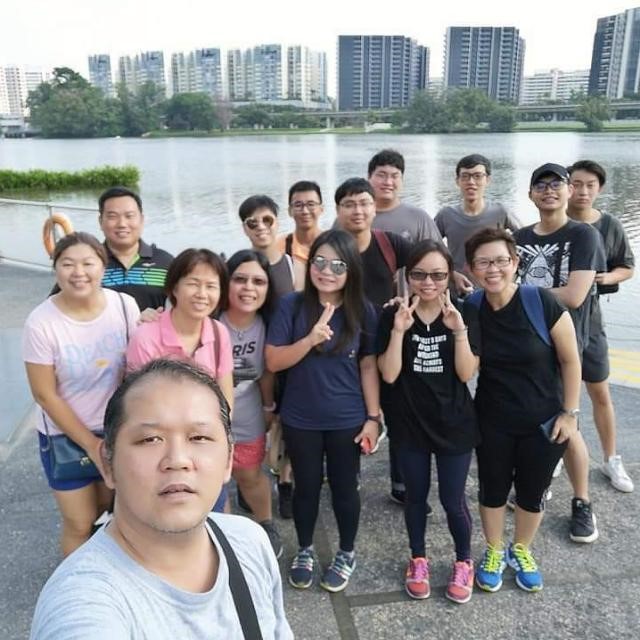
In an effort to cut down on carbon footprint and work towards environmental sustainability, an e-Appraisal was implemented in the Republic of Singapore Navy (RSN). Previously, hardcopy appraisal forms were administered for operationally ready National Servicemen (NSmen). Units would manually complete the appraisal forms and obtain the necessary signatures from the Reporting and Countersigning Officers. Trips also had to be made to despatch the hardcopy forms, which took time away from work, incurred transportation costs, and added to the carbon footprint. The appraisal grades and other information would then be individually keyed into the information system. The introduction of the e-Appraisal forms reduced the time taken to upload NS appraisals after In-Camp Training (ICT), allowing deserving NSmen to be identified and recognised in a timely manner with suitable promotions and awards. The e-Appraisal also saw an average of nine hours’ savings in the preparation and retrieval of appraisal results for a single ICT. This initiative was also shared with the other services in the SAF.

The NS Portal has been revamped to provide MINDEF with an omni-channel platform and a transformed user experience to achieve the objectives of providing customer-centric and personalised services to better engage and reach out to the National Service (NS) community. The NGNSP has been redesigned to provide user personalisation through profile-based navigation and notifications. Members of the NS community now have easier access to information and can perform their administrative transactions with far greater ease and in a more user-friendly manner. The revamped NS Portal garners, on average, 10 million page views and 250,000 logins every month. The portal allows users to perform a wide range of over 400 unique business transactions and access information from 30 MINDEF and the SAF Internet websites. Since its launch in 2017, the responses to the new NS Portal have been positive.
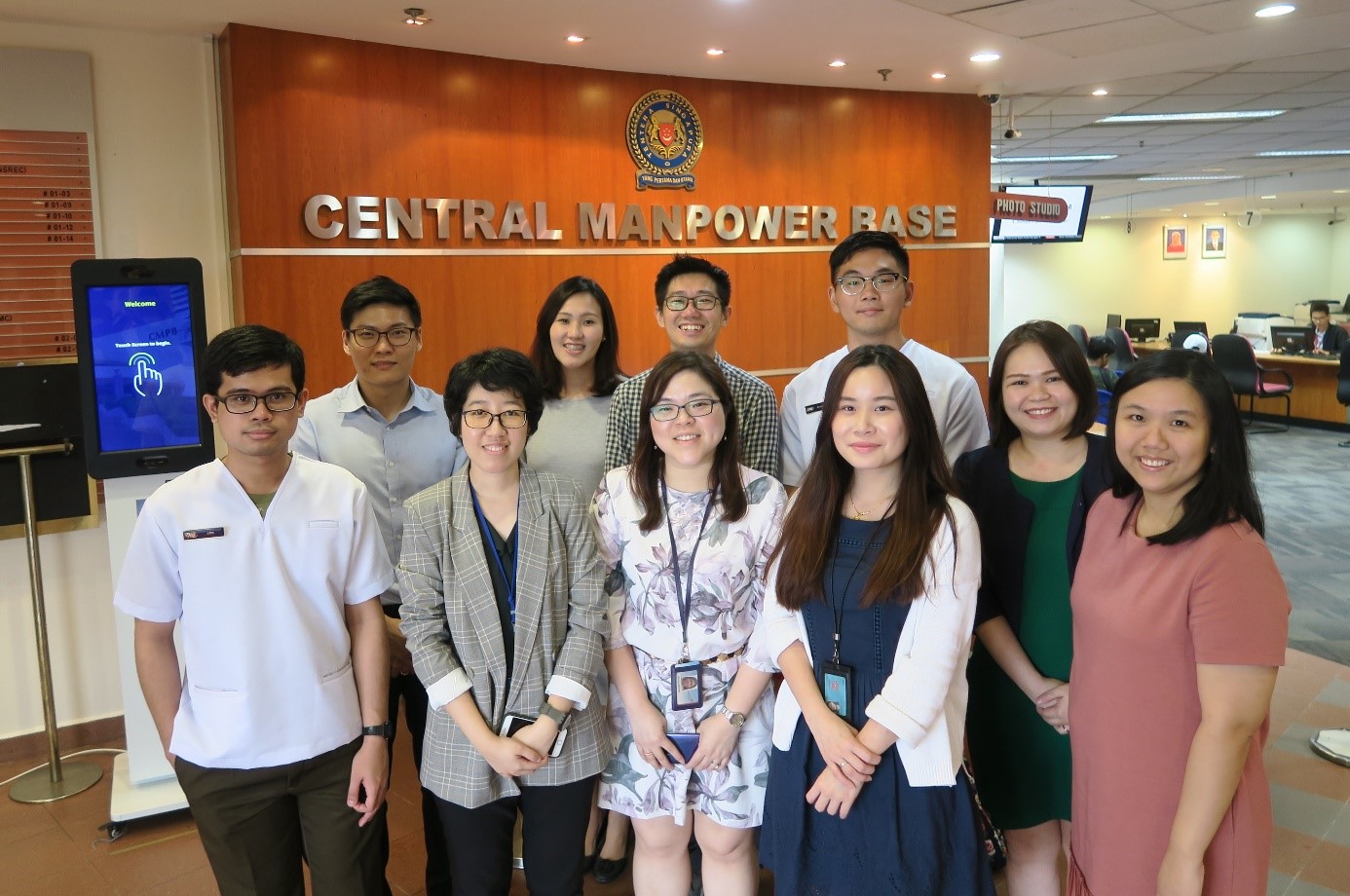
As part of the efforts to enhance the National Service (NS) experience at the new NS Hub, two departments within MINDEF – GRPO and Central Manpower Base (CMPB) – worked together to develop and test out a Smart Service Delivery System. Leveraging technologies such as facial recognition and video analytics, the system aims to deliver efficient and anticipatory services, with data-driven service delivery analytics for continuous service improvement. Real-time queue management takes into consideration various factors (such as the processing capacity at each station and the proximity of the pre-enlistee to the station) to channel the pre-enlistees to their next station. This provides a more seamless experience for pre-enlistees and shortens the overall wait time for medical screening. Pre-enlistees are also able to self-help for queue information and track their completion status at the respective stations with facial recognition technology. A trial of the system is currently being conducted at CMPB, and it is expected to reduce the overall wait time for pre-enlistment medical screenings by up to 50%.
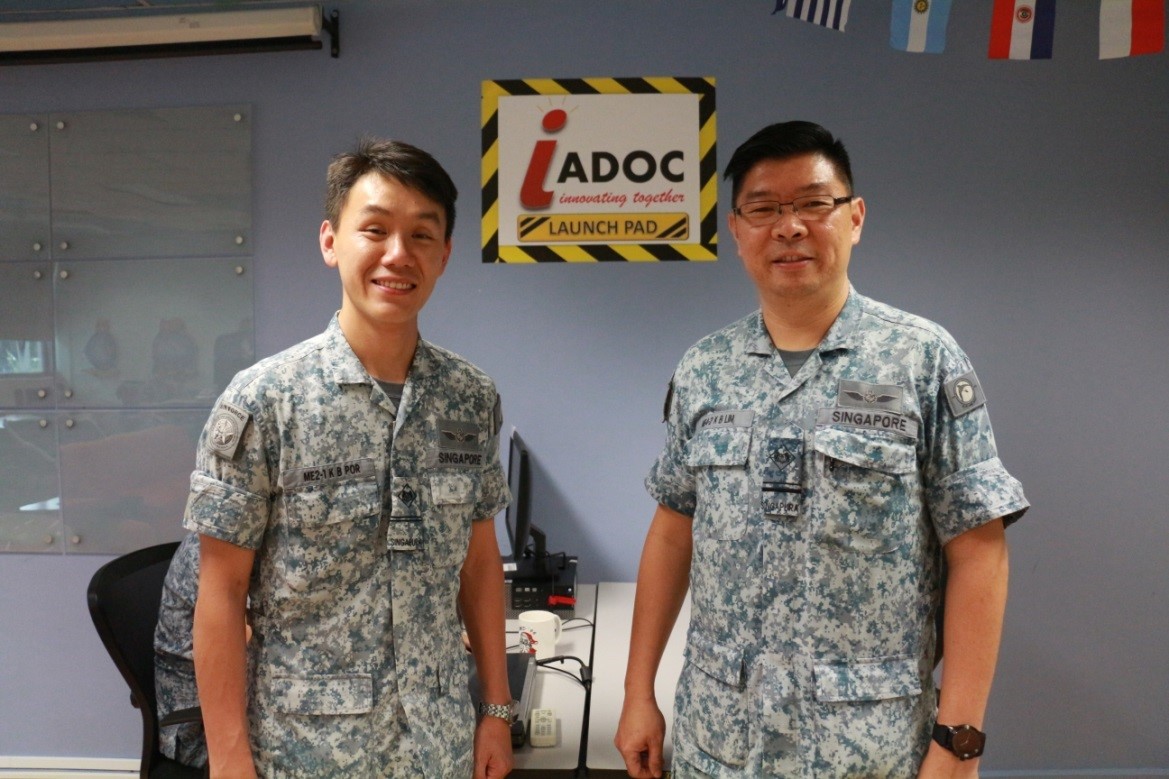
The SAF is a networked fighting force with weapon systems deployed at multiple remote sites inter-connected through MINDEF strategic networks. Operational crews had to make routine trips to remote sites to conduct network serviceability checks on network stumps to ensure operational readiness. To enhance employees’ work on the ground, the Solar Powered Remote Network Monitoring System (RNMS) was designed in-house and fabricated. The RNMS is able to provide continuous updates of the network serviceability status for operational readiness, which thus eliminated the need for manpower and vehicular resources to perform the checks on-site. This has created capacity for the operational crew to better channel their resources to focus on their training and missions, and also eliminated the safety risk of travelling to the remote sites.


Challenge
In the past, trainee orientation for the MAN 5-Ton Truck was carried out physically by going around and under the platform so as to identify the locations of various components. This had to be done under the close supervision of an instructor, who typically led a small group of three to four trainees. The rate of orientation was limited by the number of vehicles. In addition, the instructor had to repeat the process to orientate the entire cohort. This practice was resource intensive, making it impractical to scale training for 120 NSmen during ICTs.
Solution
With AR technology, the instructor can now simultaneously engage up to 30 trainees through a printed image of a MAN 5-Ton Truck placed on a table. As each learner can view a 3D visualisation of the whole vehicle, they are able to explore the vehicle by moving around the image – pinching and rotating the 3D model on their mobile phone.
The learners would also engage in ‘Spatial Learning’ in the 1:1 exploration mode, experiencing the real size and orientation of the MAN 5-Ton Truck by walking around the actual size of the vehicle and observe the individual components depicted as translucent 3D models and/or opaque components.

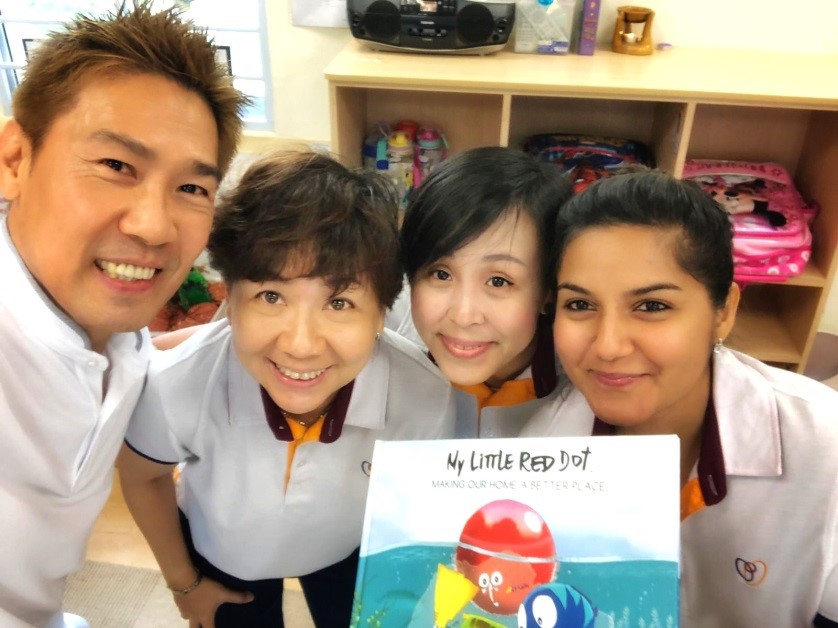
To better engage children and parents on Total Defence values, “My Little Red Dot – Making Our Home A Better Place” is the first ever Total Defence Activity Book for pre-schoolers and their parents. It is an innovative and engaging activity book on Total Defence values that has reached out to the young Singapore family unit (30,000 pre-schoolers and their parents). The intent of the book is for children to pick up Total Defence values and habits through interactive means from the book and for parents to share values such as unity and resilience with their children through reading. This initiative has demonstrated that it has values that cut across various fields of the citizen-centric mind-set, together with the involvement of various stakeholder groups in the process of delivering this service. It leverages opportunities to pull various partners together for collaboration and brings more value to partners in the process.
Whether you are new to innovation, a seasoned innovator, or just curious about the buzz word, the Innovation Concierge can guide you in the MINDEF/SAF innovation journey.
We will share with you the tools, resources, and know-hows to get started, as well as offer tips and hacks to help you overcome challenges that you face during innovation.
Come down to the Innovation Concierge and we’ll lend you a helping hand to realise the benefits your innovation ideas can bring about.
One of the issues that aspiring innovators in MINDEF/SAF face today is “How and where to get started?”.
The Innovation Playbook is a one-stop digital pocket guide to help our servicemen understand and navigate the end-to-end innovation process in MINDEF/SAF.
It provides an overview of the resources and tools available – both internally and externally – across the different innovation phases such as user research techniques, ideation tools, and guidelines on available funding that will enable them to innovate more effectively.
The playbook is also supplemented with case studies to help servicemen understand how these resources and tools can be applied across the different innovation phases, and to their own projects.
Click here to access the Innovation Playbook for MINDEF/SAF.
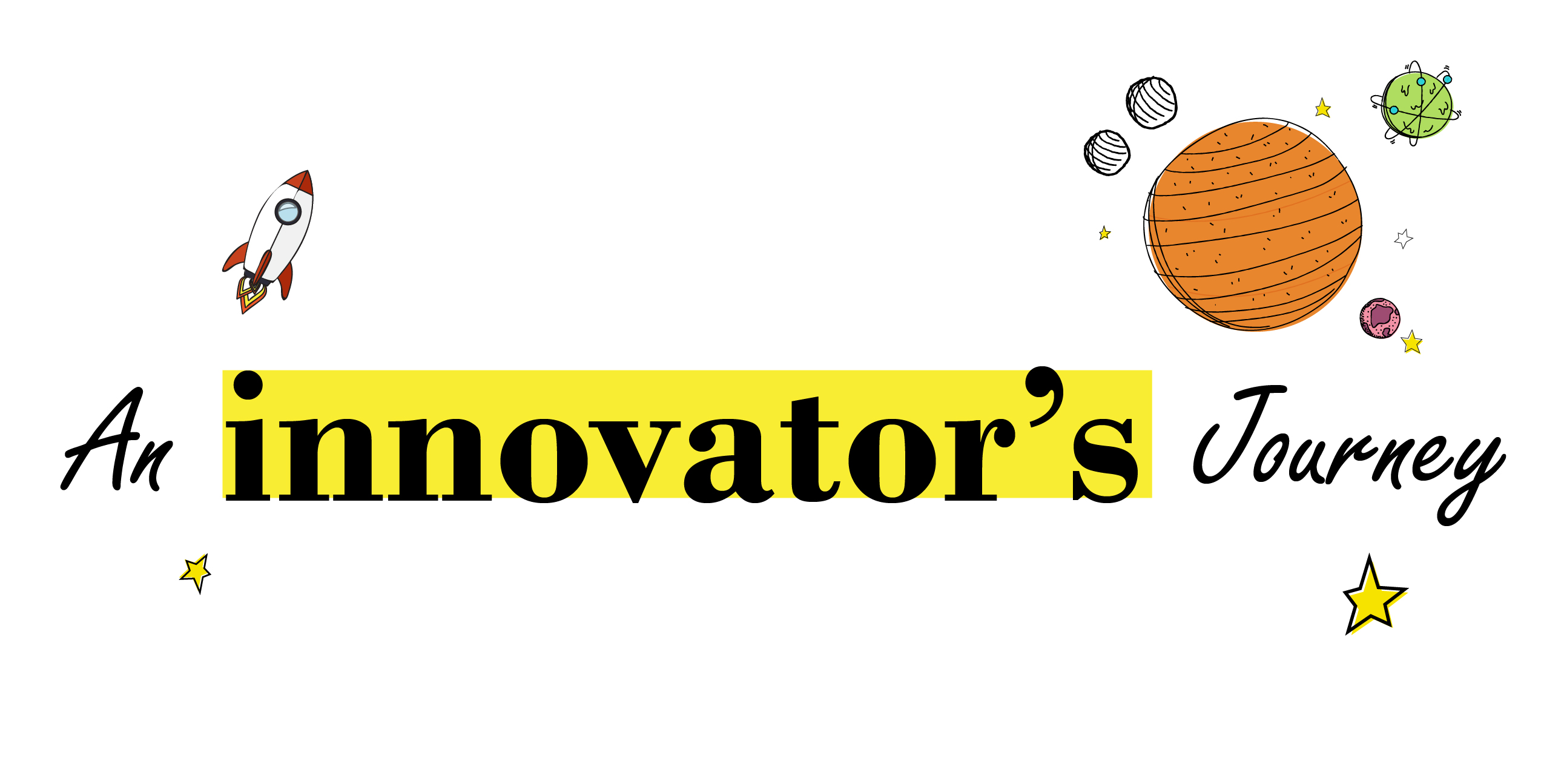
Transport yourself through an interactive and digital journey of the aspiring innovator in MINDEF/SAF – from how ideas are first conceptualised to how they get implemented and proliferated.
Touch to trigger and explore a powerful and memorable experience through the various interactive features while you learn more about the different phases of innovation, and the resources and tools available to support you.
Finally, pledge your support to embark on the innovation journey with everyone else to launch your very own digital rocket.

